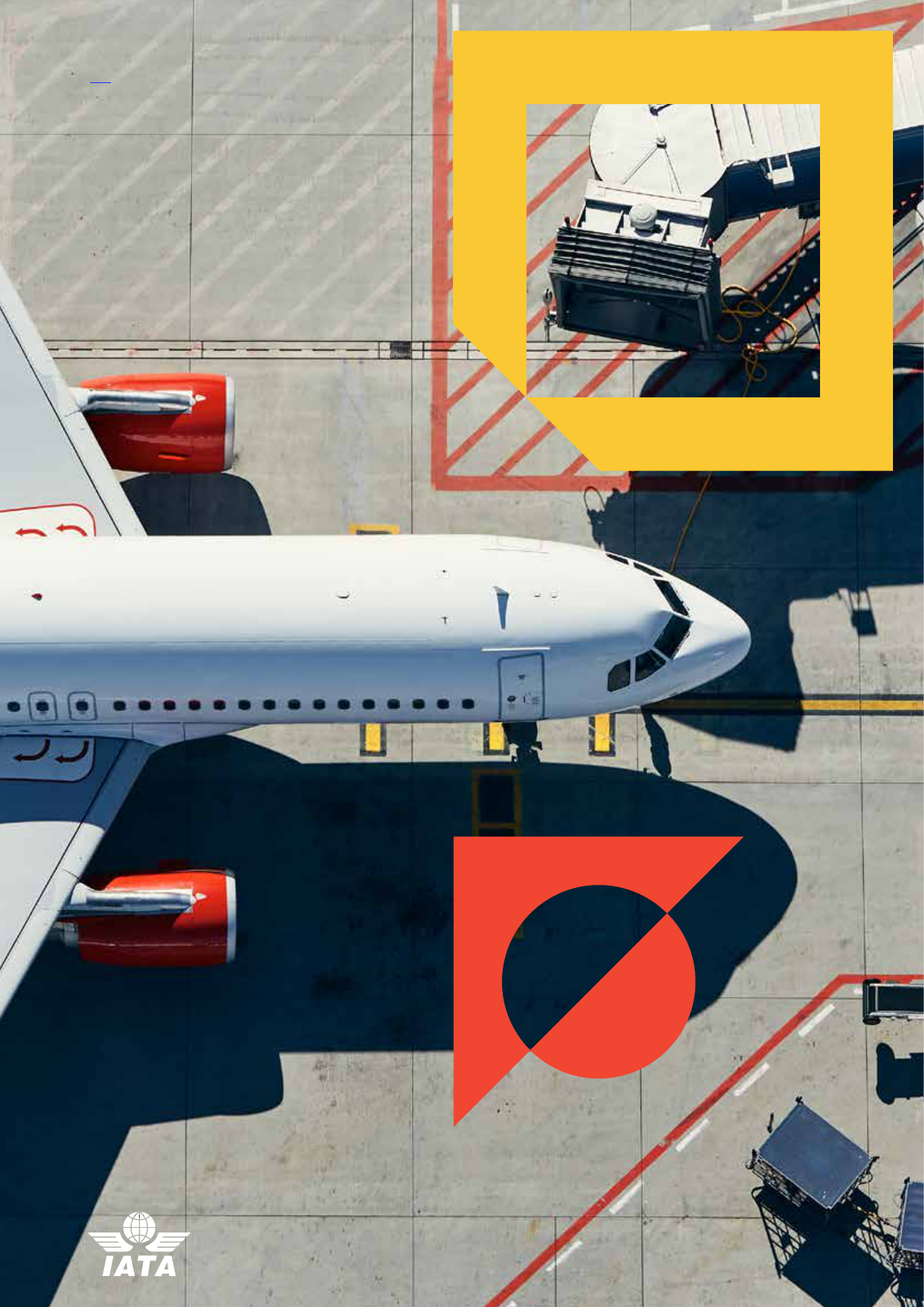
IATA
Annual
Review
2022
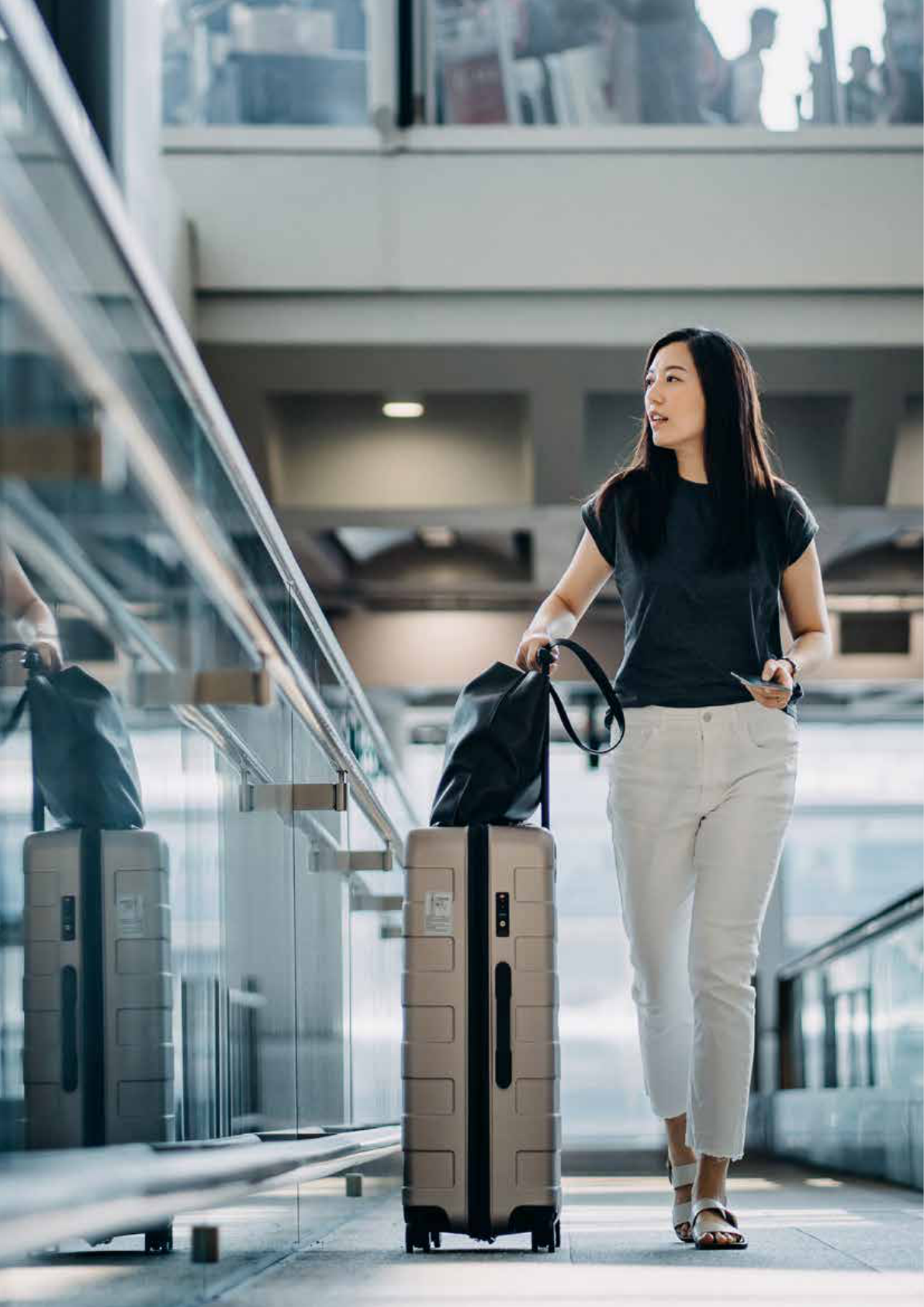
Contents
IATA Annual Review 2022
2

Contents
3
IATA Annual Review 2022
04 Members’ list
06 Willie Walsh, Director General
08 Robin Hayes Chair, Board of Governors
11 Industry Story
16 Safety
22 Security
24 Regulations
30 Environment and Sustainability
34 Passenger Experience
36 Cargo
40 Financial Services
42 Diversity & Inclusion
44 Airline Retailing
Contents
International Air Transport Association
Annual Review 2022
78th Annual General Meeting and
World Air Transport Summit, Doha, Qatar

Members’ list
IATA Annual Review 2022
4
A
ABX Air
Aegean Airlines
Aer Lingus
Aero Republica
Aerolineas Argentinas
Aeromar
Aeromexico
Africa World Airlines
Air Algerie
Air Arabia
Air Astana
Air Austral
Air Baltic
Air Botswana
Air Burkina
Air Cairo
Air Caledonie
Air Canada
Air Caraibes
Air China
Air Corsica
Air Dolomiti
Air Europa
Air France
Air Guilin
Air India
Air Koryo
Air Macau
Air Madagascar
Air Malta
Air Mauritius
Air Moldova
Air New Zealand
Air Niugini
Air Nostrum
Air Peace
Air Serbia
Air Seychelles
Air Tahiti
Air Tahiti Nui
Air Tanzania
Air Transat
Air Vanuatu
AirBridgeCargo Airlines
Aircalin
Airlink
Alaska Airlines
Albastar
Allied Air
AlMasria Universal
Airlines
American Airlines
ANA
APG Airlines
Arkia Israeli Airlines
Asiana Airlines
ASKY
ASL Airlines France
Atlantic Airways
Atlas Air
Austrian
Avianca
Avianca Costa Rica
Avianca Ecuador
Azerbaijan Airlines
Azores Airlines
Azul Brazilian Airlines
B
Badr Airlines
Bahamasair
Bamboo Airways
Bangkok Airways
Batik Air
Batik Air Malaysia
Belavia Belarusian
Airlines
Biman Bangladesh
Airlines
Binter Canarias
Blue Air
BoA Boliviana de
Aviacion
Braathens Regional
Airways
British Airways
Brussels Airlines
Bulgaria Air
C
Cabo Verde Airlines
CAL Cargo Airlines
Camair-Co
Cambodia Angkor Air
Capital Airlines
Cargojet Airways
Cargolux
Caribbean Airlines
Carpatair
China Airlines
China Cargo Airlines
China Eastern
China Express Airlines
China Postal Airlines
China Southern Airlines
CityJet
Condor
Congo Airways
Copa Airlines
Corendon Airlines
Corsair International
Croatia Airlines
Cubana
Cyprus Airways
Czech Airlines
D
Delta Air Lines
DHL Air
DHL Aviation
E
Eastern Airlines
Eastern Airways
Egyptair
EL AL
Emirates
Ethiopian Airlines
Etihad Airways
EuroAtlantic Airways
European Air Transport
Eurowings
EVA Air
Evelop Airlines
F
FedEx Express
Fiji Airways
Finnair
Fly Baghdad
FlyEgypt
Flynas
Flyone
Freebird Airlines
French Bee
Fuzhou Airlines
G
Garuda Indonesia
Georgian Airways
German Airways
GOL Linhas Aereas
Gulf Air
GX Airlines
H
Hahn Air
Hainan Airlines
Hawaiian Airlines
Hebei Airlines
Hi Fly
Hong Kong Air Cargo
Hong Kong Airlines
Hong Kong Express
Airways
I
Iberia
Icelandair
IndiGo
Iran Air
Iran Airtour Airline
Iran Aseman Airlines
Israir
ITA Airways
J
Japan Airlines
Japan Transocean Air
Jazeera Airways
Jeju Air
JetBlue
Jin Air
Jordan Aviation
Juneyao Airlines
K
Kam Air
Kenya Airways
KLM
Korean Air
Kunming Airlines
Kuwait Airways
Members’ list

Members’ list
5
IATA Annual Review 2022
L
LAM
Lao Airlines
LATAM Airlines Brasil
LATAM Airlines Colombia
LATAM Airlines Ecuador
LATAM Airlines Group
LATAM Airlines Paraguay
LATAM Airlines Peru
LATAM Cargo Brasil
LATAM Cargo Chile
Loong Air
LOT Polish Airlines
Lucky Air
Lufthansa
Lufthansa Cargo
Lufthansa CityLine
Luxair
M
Malaysia Airlines
Mandarin Airlines
Martinair Cargo
Mas Air
Mauritania Airlines
International
MEA
MIAT Mongolian Airlines
MNG Airlines
Myanmar Airways
International
N
National Airlines
NCA Nippon Cargo
Airlines
Neos
Nesma Airlines
Nile Air
NordStar
Nordwind Airlines
Nouvelair
O
Okay Airways
Olympic Air
Oman Air
Overland Airways
P
Paranair
Pegas Fly
Pegasus Airlines
PGA Portugalia Airlines
Philippine Airlines
PIA Pakistan
International Airlines
Polar Air Cargo
Poste Air Cargo
Precision Air
Privilege Style
Q
Qantas
Qatar Airways
Qazaq Air
R
Ravn Alaska
Rossiya Airlines
Royal Air Maroc
Royal Brunei
Royal Jordanian
Ruili Airlines
RusLine
RwandAir
S
S7 Airlines
Safair
SAS
SATA Air Acores
Saudi Arabian Airlines
SCAT Airlines
SF Airlines
Shandong Airlines
Shanghai Airlines
Shenzhen Airlines
Sichuan Airlines
Silk Way West Airlines
Singapore Airlines
SKY Airline
Smartavia
Smartwings
Solomon Airlines
Somon Air
South African Airways
SpiceJet
SriLankan Airlines
SunExpress
Suparna Airlines
SWISS
Syrianair
T
TAAG Angola Airlines
TACA
TAP Portugal
TAROM
Tassili Airlines
Thai Airways
International
Thai Lion Air
Thai Smile
Tianjin Airlines
Tunisair
Turkish Airlines
T’way Air
U
Ukraine International
Airlines
UNI AIR
United Airlines
UPS Airlines
Ural Airlines
Urumqi Air
UTair
Uzbekistan Airways
V
Vietjet
Vietnam Airlines
Virgin Atlantic
Virgin Australia
Vistara
Volaris
Volotea
Vueling
W
Wamos Air
West Air
WestJet
White Airways
Wideroe
World 2 Fly
X
Xiamen Airlines
Y
YTO Cargo Airlines

Willie Walsh, Director General
IATA Annual Review 2022
6
WILLIE WALSH, DIRECTOR GENERAL
Keeping the
worldconnected
A
viation is resilient and on
the rise. After the worst
downturn in our history, we
have turned the corner on
the COVID-19 pandemic.
Industry losses are expected to
reduce to $9.7 billion in 2022; down
from $42.1 billion in 2021. That is a
huge improvement from losses of
$137.7 billion in 2020.
In growing numbers and with
rising excitement and enthusiasm,
peopleare again enjoying the
freedom to travel, to connect
withone another, and to see the
world. By the end of 2023, most
regions will be at—or exceeding—
pre-pandemic levels of demand.
Pandemic lessons
Looking back at the pandemic,
wecan point to our service
with pride. Where permitted by
governments, airlines kept the
world connected. Airlines kept
vital supply lanes open to deliver
lifesaving vaccines and medical
supplies. And they operated to the
highest levels of safety throughout.
Over and over, the aviation
workforce rose to the occasion.
In fact, the importance of aviation
was made absolutely clear
by thepandemic restrictions.
Peoplerecognized that their
qualityof life deteriorated and
economies suered.
This pandemic will not be the last.
It is vital, therefore, that we draw
the correct lessons so that we can
be better prepared next time. Top
of the list of lessons learned is that
travel restrictions did little to contain
the spread of COVID-19. The World
Health Organization (WHO) said
this from the beginning, but far too
manygovernments ignored their
sound advice. Governments must
dobetter next time.
Working with governments
Many governments recognized
aviation’s vital role as an economic
lynchpin, providing nancial relief to
numerous airlines. As governments
now rebuild their regulatory
agendas, it is critical that they
continue to focus on regulations
that create value. IATA will be
vigilant and remind governments
that the benets of regulation must
exceed the costs they create.
Slot regulation is a case in point.
The Worldwide Airport Slot
Guidelines are fundamental to
delivering reliable schedules
with insucient airport capacity.
When government-imposed
travel restrictions stopped
airlines operating, exibility on
slot rules preserved networks
and connectivity. Now, as
routes are being re-opened and
demand returns, we still require
exibility in slot rules, particularly
as airports race to hire back
sta tomeet surging demand.
There isabsolutely no reason to
treat thereturn to normal as an
opportunity to rewrite the slot
rulesthat performed admirably
before the lockdown.
Likewise, we see the temptation
to introduce new consumer
regulations, on everything
from airline service oerings
to accessible travel. We are
committed to making travel
accessible, but the focus of any new
rules needs to be on addressing
the operational issues in this area,
rather than imposing penalties.
Regulators must not tolerate
infrastructure providers seeking to
recover pandemic losses by using
their natural monopoly powers
to price-gouge their customers.
With some airports already in the
process of implementing double-
digit increases, governments
must understand that the light
touch regulations proposed by
many airports come with a heavy
price topay for consumers, the
economy,and airlines.
Sustainability
At our 77th AGM, our members
resolved to achieve net zero
carbon emissions by 2050. That
was quickly followed by similar
commitments across the industry.
The missing component is a
similarly ambitious long-term target
by governments, which should be
articulated at this year’s Assembly
of the International Civil Aviation
Organization (ICAO).
The Assembly will also be an
opportunity for governments to
shore-up their support for CORSIA
(Carbon Osetting and Reduction
Scheme for International Aviation)
with a sensible baseline agreement
that fairly recognizes the adjusted
baseline of 2019. Individual
governments must not undermine
CORSIA’s eectiveness with
competing, duplicative, or politically
divisive extra-territorial initiatives.
To achieve net zero by 2050,
airlines must rely on infrastructure,
supplier partners, and the oset
providers to do their part with
credible initiatives that deliver real
reductions. The game changer,
however, is sustainable aviation fuel
(SAF), which is expected to account
for about 65% of our carbon

Willie Walsh, Director General
7
IATA Annual Review 2022
mitigation eorts by 2050. Airlines
bought every drop of SAF that was
available in 2021 and made forward
purchase agreements worth
some $17 billion. As with the wind
and solar energy transitions, the
tipping point will be facilitated by
government incentives, not taxes.
Diversity
The last challenge to highlight is
improving gender diversity. We
have made progress, but aviation
continues to be male dominated. By
not having better gender balance,
we are short-changing our industry
on talent, and in the long term
this is not sustainable. There is no
way to successfully address labor
shortages if we do not take full
advantage of the female half of the
population. Change is happening
but we must make it happen faster
through the examples of the IATA
Diversity and Inclusion Awards
andthe commitments of the
25by2025 initiative.
IATA
In the 14 months since taking on
theresponsibilities of Director
General, I have gained a deep
“By the end of 2023,
most regions will be
at—or exceeding—
pre-pandemic
appreciation of the excellent
work being done by the IATA
team in serving the needs of
our members. Examples of their
eorts are present throughout
this document. This includes our
nancial settlement systems
that have remained reliable
even under extreme stress. I am
determined to make IATA even
more eective in the coming year
and I know my IATA colleagues
share this commitment.
Willie Walsh,
Director General

Robin Hayes Chair, Board of Governors
IATA Annual Review 2022
8
ROBIN HAYES, CHAIR, IATA BOARD OF GOVERNORS, CEO OF JETBLUE AIRWAYS
Accelerating the
energytransition
Q
Though the pandemic is not
completely behind us, the
recovery is underway. Are you
optimistic? And what do we need
to learn from the two years of
COVID-19?
Yes, I’m incredibly optimistic.
After more than two years, we are
turningthe corner on COVID and
are on a path to sustained recovery,
with travel almost back to 2019
levels in several parts of the world.
Key to this rebound has been the
removal of many of the restrictive
COVID travel policies.
Throughout the pandemic, as an
industry we’ve had to face the
challenges of operating with a
patchwork of entry regulations
that have been dicult for airlines
and travelers alike. We’ve learned
the importance of working with
governments worldwide to
streamline entry requirements
to countries for customers
and airlines. Many of these
requirements are no longer in
place, but we need to remain
focused on ensuring unied
protocols and procedures so
thatwe can be better prepared
forthe next challenge that we
faceas an industry.
Q
As people return to traveling,
how have customer
expectations changed, and
arethere demand shifts that
willrequire a response at the
industry level?
As an industry, we were already
focused on technology before the
pandemic. Technology proved an
incredible resource because it
provided the tools and services
to reduce our customers’ shared
touchpoints while keeping a focus
on safety and social distancing.
We’ve seen that customers
appreciate and adapt to technology
enhancements, and we are certain
that their expectations moving
forward will be on the increasingly
seamless experience that we can
provide through technology.
We’re also seeing that customers
appreciate the enhanced cleaning
measures that our industry
introduced during the pandemic.
Though the mask mandates have
dropped in many of the countries
around the world, we’re also going
to see a number of travelers
continue wearing masks.
We’ve seen the demand for leisure
travel come roaring back, with
some airlines and airports reporting
the highest passenger numbers
since the start of the pandemic.
Business travel is not recovering
as quickly, but we’re seeing trends
that show that it, too, is getting
back on track. Companies know
that virtual networking is limited,
and that business travel is vital to
attracting clients and supporting
collaboration and teamwork.
Q
What would you say to
airports that are campaigning
for reduced economic regulation?
We need more than ever to work
together to support the recovery
of our industry, and a key way
to do this is to ensure that we’re
protecting our customers. Without
strong economic regulation,
airports and air navigation service
providers (ANSPs) can operate as
a monopoly in any given market.
As such, they could arbitrarily and
unfairly raise their prices to the
detriment of travelers and airlines.
“The volatility of energy
markets is highlighting
our need to transition
even more quickly to
sustainable aviation

Robin Hayes Chair, Board of Governors
9
IATA Annual Review 2022
Without competition, we also know
that there is no urgency to provide
quality or timely service.
I am sure each and every airport
campaigning for reduced economic
regulation has no plan to abuse a
position of power, but economic
regulation is the only protection
we can provide for travelers.
Regulations also play an important
part in moving our industry and
services forward by encouraging
airports and ANSPs to strive for
investments that improve cost
eciency and service levels. Our
industry is never without scrutiny,
and we need economic regulation
to protect our business and ensure
we’re all providing the highest level
of service possible to travelers.
Q
The industry made a
commitment to achieve net-
zero emissions by 2050. Are we
making sucient progress?
Climate change remains the
greatest threat to our world and
the greatest challenge for our
industry. We need to continue to
tackle it and to ensure that our
partners, including governments,
play their part in solving long-
standing issues. No one airline or
airport or aircraft manufacturer
will be able to move the needle
forward alone. Iwas pleased that
we passed Fly Net Zeroat our
Annual General Meetinglast year.
We need everyone, especially our
business partners in the industry, to
continue investing and innovating
in technologies and products
that allow us to keep our forward
momentum, from aircraft that can
use 100% sustainable aviation fuels
(SAF) to improved aircraft engines
and airline-related machinery.
The volatility of energy markets is
highlighting our need to transition
quickly to SAF. Unfortunately, SAF
are not being produced at levels
that the industry needs, and pricing
remains high. SAF are essential to
our strategy for reaching net-zero.
We need to work together as an
industry, and we need appropriate
government policy that supports
the increased production of SAF,
sothey are more widely available
and at a better price.
One of our other issues is that
net-zero does come at a cost, and
we need to make sure we prioritize
sustainability while also protecting
our business. Ultimately, I believe
Fly Net Zero is going to help us
be successful by coordinating
the eorts of the entire industry
to meet our net-zero emissions
goalby 2050 and by helping us
stay on track with our short- and
medium-term targets.
Q
As we look ahead to the next
ve years, what do you see
as aviation’s biggest challenges?
And what is IATA’s role in
addressing them?
Climate change and environmental
issues remain our greatest
challenges. Not only is reducing our
carbon emissions the right thing to
do but also we’re under tremendous
pressure from governments and
travelers to adopt measures
to reduce the environmental

Robin Hayes Chair, Board of Governors
IATA Annual Review 2022
10
impact oftravel. As the unifying
organization of our industry, IATA
must make sure it moves forward
in the Fly Net Zero program and
hits targets. And the industry
must share with governments and
communities the progress we’re
making in our eorts.
In the short term, it is imperative
that we manage and retain talent in
the industry. Because of the highly
specialized nature of our work and
the impact of the pandemic, we’re
experiencing workforce shortages.
We are therefore laser focused
on supporting the talent pipeline
to ensure that we’re fostering
opportunities and overcoming
challenges, educational or
nancial, to entering our industry.
IATA has been providing training
for aviationprofessionals for 50
years, and so it is going to play an
important part in contributing to
theindustry recovery. By working
with our partners, we can attract
new talent and help shape the
future of aviation.
As we look to the future, we
also need to focus on improving
diversity within our industry.
IATA’s 25by2025 program will be
a principal enabler in increasing
the number of women in senior
positions by either 25% or to
a minimum of 25% by 2025.
Diversity, equity, and inclusion are
fundamental for the future of our
industry. Companies that have
great diversity at the management
level perform the best. Research
shows that companies that rank
high in diversity are also more
likely to attract top talent, to
improve customer and employee
satisfaction, and to have better
decision-making and nancial
returns. By establishing a culture
of diversity, equity, and inclusion,
the aviation industry will secure its
talent pipeline for years to come.
Robin Hayes, Chair,
IATA Board of Governors,
CEO of JetBlue Airways
MEMBERSHIP OF THE BOARD OF GOVERNORS
As at 9 June 2022
1. Abdelhamid Addou
Chairman and Chief
Executive Ocer
ROYAL AIR MAROC
2. Akbar Al Baker
Group Chief Executive
QATAR AIRWAYS
3. Ibrahim Al-Omar
Director General
SAUDI ARABIAN AIRLINES
4. Roberto Alvo
Chief Executive Ocer
LATAM AIRLINES GROUP
5. Enrique Javier
Beltranena Mejicano
President and Chief
Executive Ocer
VOLARIS
6. Walter Cho
Chairman and Chief
Executive Ocer
KOREAN AIR
7. Donald Colleran
President and Chief
Executive Ocer
FEDEX EXPRESS
8. Ronojoy Dutta
Chief Executive Ocer
INDIGO AIRLINES
9. Pieter Elbers
President and Chief
Executive Ocer
KLM ROYAL DUTCH
AIRLINES
10. Mohamad El-Hout
Chairman and Director
General
MIDDLE EAST AIRLINES
11. Luis Gallego Martín
Chief Executive Ocer
IAG (representing Iberia)
12. Goh Choon Phong
Chief Executive Ocer
SINGAPORE AIRLINES
13. Robin Hayes
[Chair of the Board]
President and Chief
Executive Ocer
JETBLUE AIRWAYS
14. Pedro Heilbron
Chief Executive Ocer
COPA AIRLINES
15. Izham Ismail
Group Chief Executive
Ocer
MALAYSIA AIRLINES
16. Scott Kirby
Chief Executive Ocer
UNITED AIRLINES
17. Liu Shaoyong
Chairman
CHINA EASTERN
AIRLINES
18. Ma Xulun
Chairman, President, and
Chief Executive Ocer
CHINA SOUTHERN
AIRLINES
19. Christine
Ourmières-Widener
Chief Executive Ocer
TAP AIR PORTUGAL
20. Topi Manner
President and Chief
Executive Ocer
FINNAIR
21. Yvonne
Manzi Makolo
Chief Executive Ocer
RWANDAIR
22. Mehmet TevkNane
Vice-Chairperson of
the Board (Managing
Director)
PEGASUS AIRLINES
23. Douglas Parker
Chairman
AMERICAN AIRLINES
24. Michael Rousseau
President and Chief
Executive Ocer
AIR CANADA
25. MAjay Singh
Chairman and
ManagingDirector
SPICEJET LIMITED
26. Benjamin Smith
Chief Executive Ocer
AIR FRANCE / KLM
(representing Air France)
27. Carsten Spohr
Chairman and Chief
Executive Ocer
LUFTHANSA
28. Tang Kin Wing
Augustus
Chief Executive Ocer
CATHAY PACIFIC
AIRWAYS LIMITED
29. Willie Walsh
Director General
IATA
ALSO SERVED
(To March 2022)
Yuji Hirako
President and Chief
Executive Ocer
ALL NIPPON AIRWAYS
(To March 2022)
Tewolde GebreMariam
Chief Executive Ocer
ETHIOPIAN AIRLINES
(To March 2022)
Mikhail Poluboyarinov
Chief Executive Ocer
and Chairman of the
Management Board
AEROFLOT
(To October 2021)
Adrian Neuhauser
Chief Executive Ocer
AVIANCA
(To October 2021)
Alan Joyce
Chief Executive Ocer
QANTAS
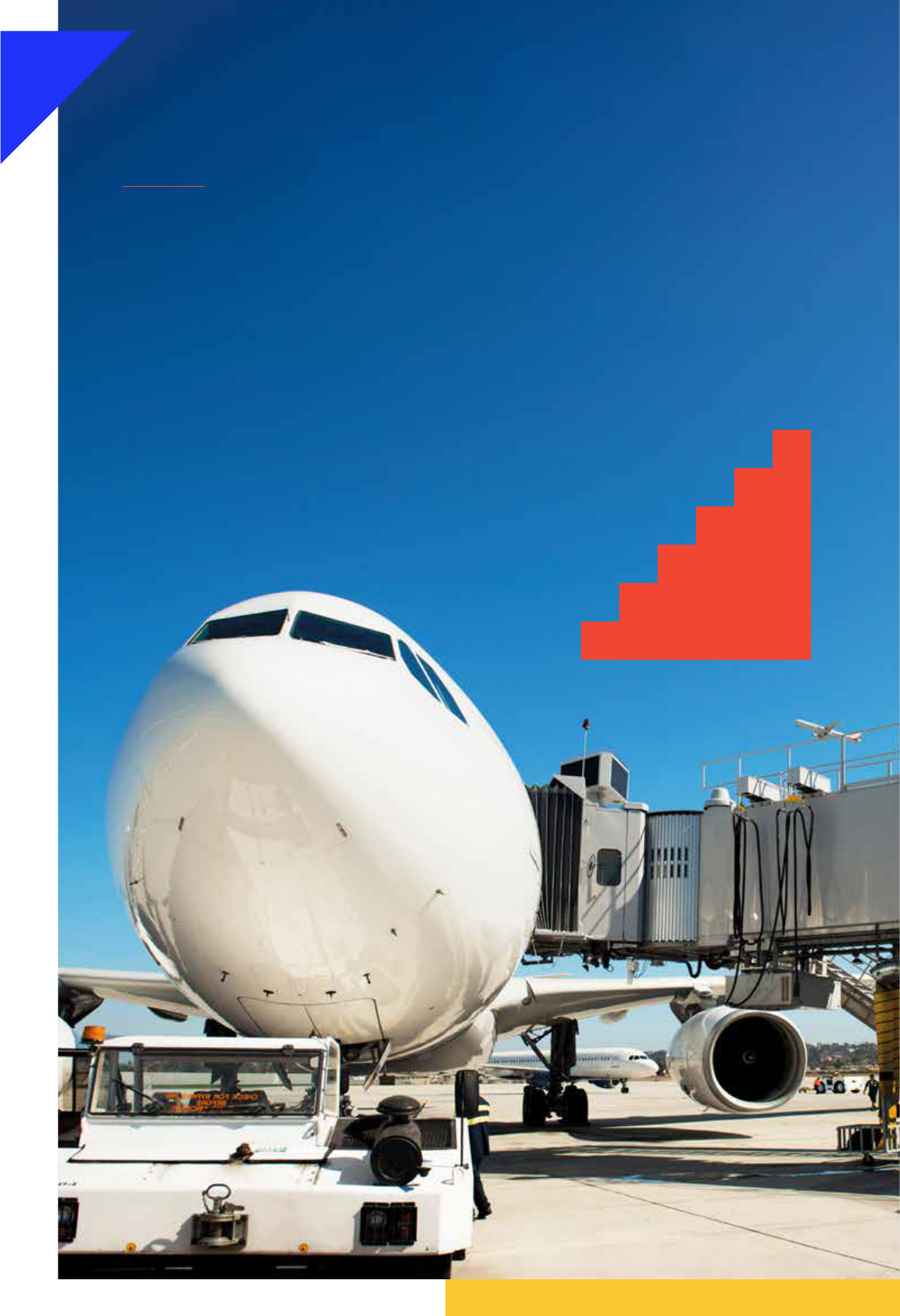
Industry Story
11
IATA Annual Review 2022
INDUSTRY STORY
On the path
torecovery

02 Seasonally adjusted domestic RPKs
(indexed to January 2020 = 100)
01 Percentage change in RPKs
03 International RPKs, YoY% change
120
100
80
60
40
20
0
20%
0%
-20%
-40%
-60%
-80%
-10 0%
20%
0%
-20%
-40%
-60%
-80%
-10 0%
Jan-20
Jan-20
Mar-20
Mar-20
May-20
May-20
Jul-20
Jul-20
Sep-20
Sep-20
Nov-20
Nov-20
Jan-21
Jan-21
Mar-21
Mar-21
May-21
May-21
Jul-21
Jul-21
Sep-21
Sep-21
Nov-21
Nov-21
Jan-21
Jan-21
Mar-22
Mar-22
China
Japan
USA
Australia
India
Brazil
Jan-20
Mar-20
Apr-20
Feb-20
May-20
Jun-20
Jul-20
Aug-20
Sep-20
Oct-20
Nov-20
Dec-20
Jan-21
Feb-21
Mar-21
April-21
May-21
Jun-21
Jul-21
Aug-21
Sep-21
Oct-21
Nov-21
Dec-21
Jan-21
Feb-21
Mar-22
Apr-22
April 2022 vs April 2019
Domestic RPKs
-25.8%
Industry total
-37.2%
International RPKs
-43.4%
Africa
Europe
Middle East
Asia Pacic
Latin America
North America
Industry Story
IATA Annual Review 2022
12
Air passenger trac
International air travel continues its recovery
The recovery of international air trac following its
COVID-19 low point in 2020 accelerated in 2021. But
some domestic markets stagnated.
Following the initial hit from the pandemic and for
most of 2020 and early 2021, international air travel
was adversely aected by travel restrictions, such
that travelers preferred less-restricted domestic
trips. Those trends reversed around mid-2021.
When governments started to lift international travel
restrictions, strong demand for international travel
ensued, especially for leisure and short-haul trips.
Domestic revenue passenger kilometers (RPKs),
conversely, trended sideways, mainly because Asian
markets, such as China, that had initially recovered
fastwere hit by renewed outbreaks of the virus.
01 Source: IATA’s Monthly Trac Statistics
Domestic markets are strongly dependent
on COVID-19 policies and pandemic-related
developments
Air travel demand diverges strongly among the largest
domestic markets. In Russia, the shift from international
to domestic air travel and favorable government policies
regarding the latter meant domestic RPKs trended
above 2019 levels for all of 2021 and prior to the war
with Ukraine. China’s domestic RPKs have returned
close to their 2019 values on several occasions only to
deteriorate following outbreaks of the Delta and Omicron
variants. The United States has seen a slow but steady
recovery in domestic air travel demand. Elsewhere,
some domestic markets continue to see volatility in
air trac amid renewed outbreaks of COVID-19 and its
variants even as 2022 witnesses reduced pressure from
COVID on health systems globally.
02 Source: IATA’s Monthly Trac Statistics
The recovery in international air travel is
resilient to shocks, but Asia-Pacic is struggling
The worldwide easing of government border
policies was arguably the main reason for growth in
international air passenger trac in 2021 and into
2022. Africa, Latin America, and the Middle East saw
faster initial letups of travel restrictions than Europe
and North America, but all of these regions have
broadly recovered in step, albeit slowly. The outlier
is Asia-Pacic, where strict government policies and
cautious travelers led to only marginal improvement in
international air transport RPKs in 2021.
In early 2022, international travel maintained its
recovery in all regions. The pace of that recovery,
however, continued to diverge between Asia-Pacic
and the rest of the world, although some Asia-Pacic
markets, such as Australia, have begun recovering
faster than the region overall following their
governments’ relaxation of restrictions.
03 Source: IATA’s Monthly Trac Statistics
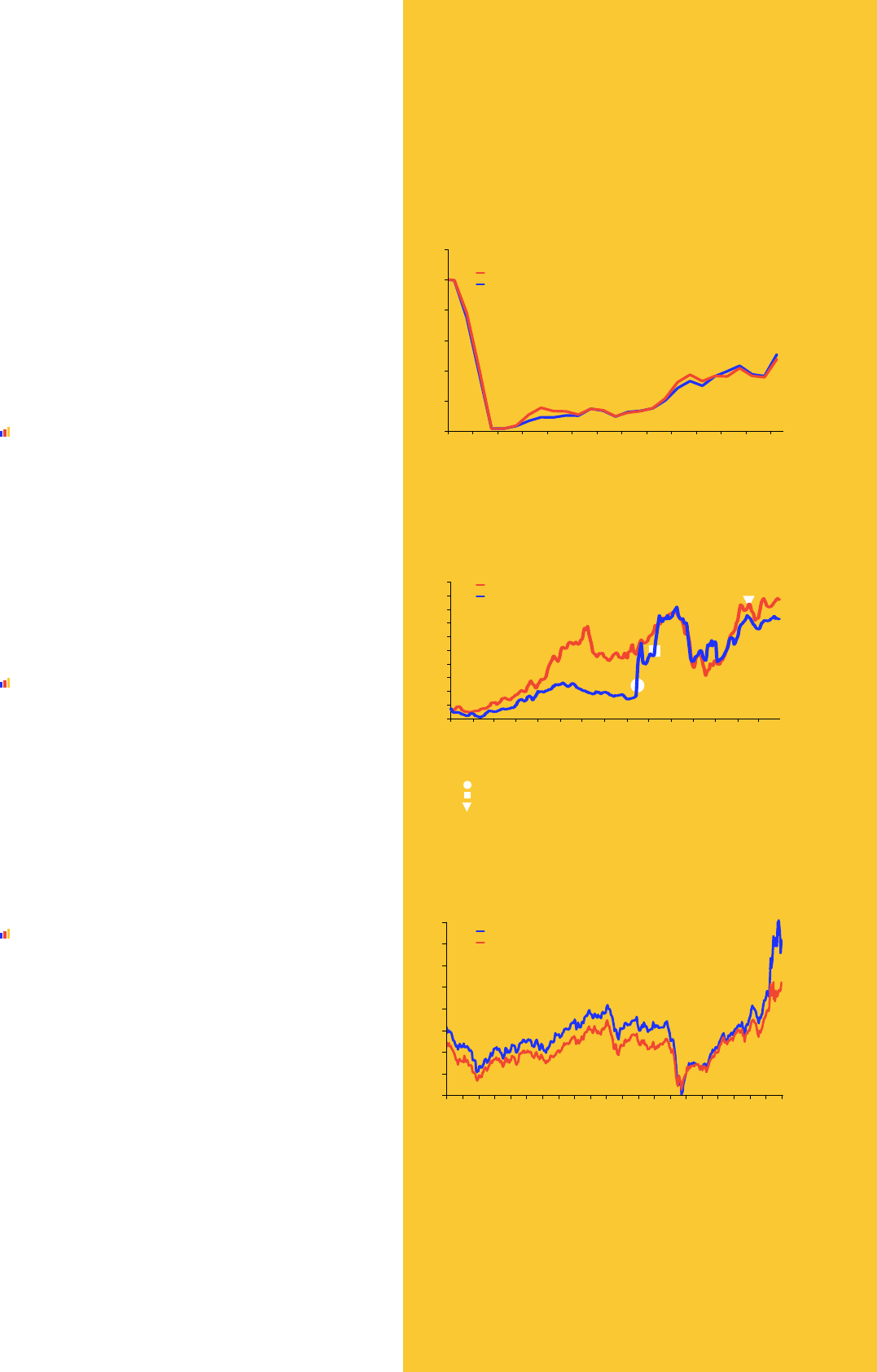
04 International RPKs by cabin class,
indexed to January 2020 = 100
05 Percentage change in bookings
in the United States and Europe
06 Jet fuel and crude oil prices
120
100
80
60
40
20
0
0%
-10 %
-20%
-30%
-40%
-50%
-60%
-70 %
-80%
-90%
-10 0%
Jan-21
Jan-20
Feb-21
Mar-20
Mar-21
May-20
Apr-21
Jul-20
May-21
Sep-20
Jun-21
Nov-20
Jul-21
Jan-21
Aug-21
Mar-21
Sep-21
May-21
Oct-21
Jul-21
Nov-21
Sep-21
Dec-21
Nov-21
Jan-22
Jan-21
Feb-22
Mar-22
Mar-22
Share of int’l RPKs by class
(identical in 2019 and 2021)
Economy 92%
Premium 8%
Bookings made in the US
Bookings made in Europe
20 Sept: US travel ban to be lifted in Nov
15 Oct: Concrete US reopening date announced
24 Feb: Escalation of war in Ukraine
Purchase date
Jet fuel price
Crude oli price (Brent)
175
155
135
115
95
75
55
35
15
May-16
Sep-15
Jan-17
Sep-17
Sep-18
May-18
May-19
May-20
May-21
May-22
May-15
Jan-16
Sep-16
May-17
Jan-18
Jan-19
Jan-20
Jan-21
Jan-22
Sep-19
Sep-20
Sep-21
$/barrel
Industry Story
13
IATA Annual Review 2022
Economy- and premium-class travel have fallen
and risen at the same pace during the pandemic
There has been much speculation throughout the
pandemic of the possible signicant impact on
business travel of video conferencing technology
and tightened corporate travel budgets. Trac
volumes in premium and economy cabin classes have
nonetheless mostly recovered in tandem and their
respective market shares are unchanged from 2019.
This is potentially the result of declines in airfares for
rst and business class relative to other classes and to
increased demand from leisure travelers for comfort
and space onboard aircraft.
04 Source: IATA’s Monthly Trac Statistics
The willingness of people to travel
deesthepandemic and other shocks
The US-Europe market illustrates that people’s
willingness to travel by air has remained strong
throughout the pandemic. The easing of air travel
restrictions has often been followed by a surge in ticket
sales. Except for countries directly aected by the
war in Ukraine, demand has been mostly untouched,
with ticket sales falling for only a week or so before
recovering. Not even ination has so far put people
o air travel. It is likely, though, that demand would be
stronger without these various shocks.
05 Source: IATA Economics, using Direct Data Service (DDS)
Jet fuel and crude oil prices rose markedly
in 2021 and early 2022, pressuring already
strained airline nances
Economic activity globally recovered well in 2021
from the depths of the pandemic, pushing demand
and prices for oil steadily higher. Initially, the crack
spread—the gap between crude oil and jet fuel prices—
was negligible, but it has grown since mid-2021. The
war in Ukraine, robust global economic activity, and
insucient crude supply led to a surge in crude oil
prices in early 2022. Jet fuel prices rose even more
quickly, driven by heightened demand.
06 Sources: S&P Global, Renitive Eikon

07 Percentage growth in air cargo demand
08 International CTKs,
indexed to January 2020 = 100
Industry-wide CTKs
Global goods trade
Relative performance of air cargo growth
% year-
on-year
30%
25%
20%
15%
10%
5%
0%
-5%
-10 %
-15%
-20%
-25%
-30%
Jan-17
Jan-20
Jul-17
Apr-20
Jan-18
Jul-20
Jul-18
Oct-20
Jan-19
Jan-21
Jul-19
Apr-21
Jan-20
Jul-21
Jul-20
Jul-21
Jan-21
Oct-21
Jul-21
Jan-22
Jul-21
140
120
100
80
60
Africa
Asia Pacic
Europe
Latin America
Middle East
North America
Industry Story
IATA Annual Review 2022
14
Air cargo trac
Air cargo grew strongly in 2021,
outperformingthe wider goods trade,
butresults deteriorated in 2022
As is typical during economic upturns, global air cargo
transport grew faster than the overall goods trade in
2021. This is because demand for goods rebounded
strongly, and businesses often did not have enough
inventory to meet that demand, inducing them to turn to
air cargo for rapid restocking. This inventory restocking
cycle tapered o somewhat at the end of 2021 into
early 2022 as the rebound in economic activity slowed
and ination began to rise. Air cargo trac continues
to grow in year-on-year terms, but its growth clearly
softened in the second half of 2021 and may well
weaken further as 2022 progresses.
07 Sources: IATA’s Monthly Trac Statistics,
Netherlands Centraal Planbureau (CPB)
Air cargo volumes for many leading routes and
markets have softened, but volumes in Africa
and Latin America continue to surge
Globally, air cargo volumes are trending sideways,
hiding the disparity among the main markets and
regions. North America, the Middle East, Asia-Pacic,
and Europe posted strong growth in air cargo volumes
in late 2020 and early 2021, but volumes thereafter lost
steam. This is partly explained by elevated ination
and related supply issues, the end of the inventory
restocking cycle, and a shift in demand from goods to
services. Airlines in Latin America lost air cargo market
share to other regions but exited their bankruptcy
procedures, which allowed them to post strong
performances in early 2022 and to begin the expected
consolidation process in the region. The cargo tonne
kilometers (CTKs) own by African airlines have been
buoyant throughout the pandemic, mainly driven by a
vigorous ow of goods and investments from China.
08 Source: IATA’s Monthly Trac Statistics
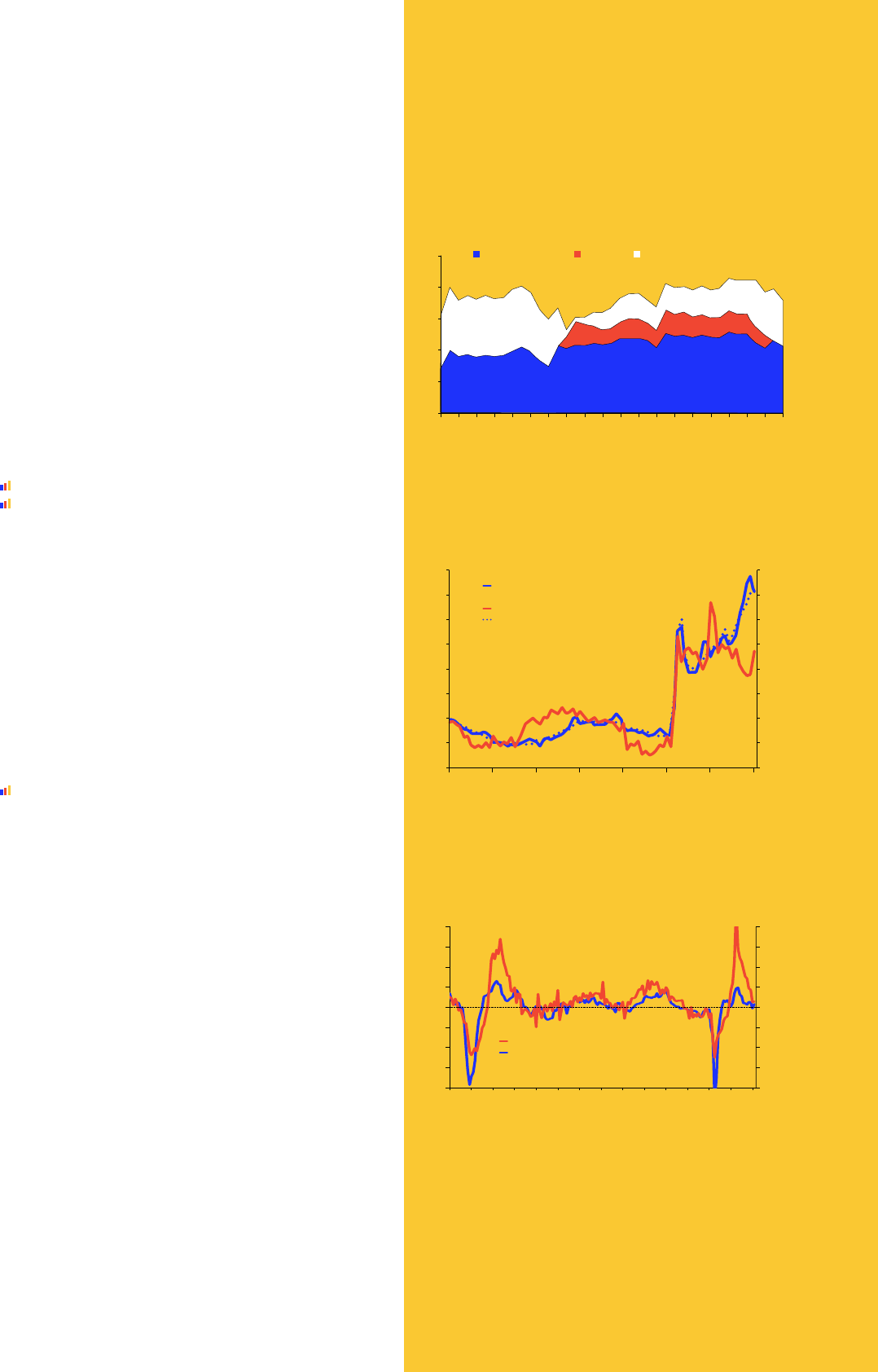
09 Percentage growth in air cargo demand
11 Percentage growth in
manufacturingexport orders
10 Cargo yields and load factors,
indexedto January 2012 = 100
Millions
2008
2009
2010
2011
2012
2013
2014
2015
2015
2016
2016
2017
2017
2018
2018
2019
2019
2020
2020
2021
2021
2022
2022
25
20
15
10
5
0
4.4
4.0
3.6
3.2
2.8
2.4
2.0
1.6
1.2
132
127
122
117
112
107
102
97
92
Dedicated freighters Preighters Passenger aircraft bellies
Aug-19
Apr-19
Dec-19
Apr-20
Oct-20
Aug-20
Feb-21
Aug-21
Feb-22
Feb-19
Jun-19
Oct-19
Feb-20
Jun-20
Dec-20
Jun-21
Dec-21
Apr-21
Oct-21
Arpr-22
51%
49%
4%
25%
71%
21%
18%
61%
28%
13%
59%
70
65
60
55
50
45
40
35
30
40%
30%
20%
10%
0%
-10 %
-20%
-30%
-40%
Growth in industry CTKs (RHS)
Global PMI component export orders
Manufacturing New export orders PMI (50 = no change)
($/kilogram)
Global air cargo yield, including fuel
andother surcharges (LHS)
Industry-wide cargo load factor (RHS)
Seasonally adjusted
Industry Story
15
IATA Annual Review 2022
Passenger aircraft belly capacity is recovering
but remains lower than pre-pandemic levels
Amid greatly diminished international passenger
trac, particularly as the pandemic took full eect,
passenger aircraft belly capacity declined substantially.
To compensate, airlines temporarily converted some
oftheir passenger aircraft to freighters, which are
dubbed “preighters.” The result was record air cargo
load factors and yields.
The air cargo load factor hit a peak in mid-2021
beforefalling as a result of lower demand and
increasedcapacity. Air cargo yields also fell in the
second half of 2021 until Omicron, labor shortages,
and other disruptions sent them to new heights at
theoutset of 2022.
09 Source: IATA’s Monthly Trac Statistics
10 Sources: IATA’s CargoIS and Monthly Trac Statistics
Export orders, key indicators of demand
for air cargo transport, were moderate
in 2021 and early 2022
The diculties faced by air cargo trac are visible
in the purchasing managers’ index (PMI) for export
orders—historically a leading indicator of air cargo
demand. Thisindicator revealed that export orders
were moderate for most of 2021 amid softening
growth.However, it turned unsupportive in January
2022, when its value dipped below 50, which signals
a deterioration on the month. Although the index
improved in February, ination, the war in Ukraine,
and renewed lockdowns in China again put downward
pressures on export orders and air cargo demand.
11 Sources: IATA’s Monthly Trac Statistics, IHS Markit

$ Billion
900
800
700
600
500
400
300
200
100
0
Passenger revenues
Cargo revenues
2015
2016
2017
2018
2019
2020
2021
12 Global airline revenues
13 Breakeven and actual passenger
andcargo load factors
2021:
57% of
2019
level
2022:
79% of
2019
level
% ATKs
$ Billion
2015
2014
2013
2012
2011
2010
2009
2008
2007
2006
2005
2016
2017
2018
2019
2020
2021
14 Air transport industry net posttax prots
60
40
20
0
-20
-40
-60
-80
-10 0
-120
-14 0
-14 0
-4.1
5.0
14.7
-26.1
-4.6
17.3
8.3
9.2
10.7
13.8
36.0
34.2
37.6
27.3
26.4
-137.7
-51.8
Industry Story
IATA Annual Review 2022
16
Airline nancials
Cargo and passenger revenues rose in 2021
butremain far from their precrisis levels
Air cargo revenues have nevertheless been the bright
story for airlines during the pandemic. They rose nearly
75% in 2021 compared with 2019 on the back of strong
demand and record cargo yields. That, however, was far
from enough to oset the fall in passenger revenues,
which in 2021 were still more than 60% under their 2019
level. This left overall airlines revenues in 2021 fully 57%
below revenues for 2019.
12 Source: IATA Economics
Airlines’ combined load factor remains below
the level required for nancial breakeven
Improvements in air passenger trac and strong air
cargo demand meant airlines were able to increase
their overall load factor in 2021 compared with 2020.
Despite this improvement, the load factor continues
to be below where it must be for airlines to break
evennancially.
13 Source: IATA Economics
Air transport again registered net posttax
losses in 2021 with improvement on the horizon
Based on IATA’s October 2021 estimates, industry-
wide net posttax losses eased from $138 billion in 2020
to $52 billion in 2021 on the back of improvements in
passenger trac and a strong air cargo performance.
IATA expects a further reduction in losses in 2022 as
the recovery extends. It is clear, however, that higher jet
fuel and labor costs, the impact of ination on demand,
outbreaks of COVID-19 in China, and a broad-based
slowdown in economic activity will put downward
pressure on airline nancials. Some airlines, though,
are expected to turn a prot in 2022, particularly those
with large domestic markets and open borders.
14 Source: IATA Economics
2015
2016
2017
2018
2019
2020
2021
80%
75%
70%
65%
60%
55%
Breakeven load factor (passenger + cargo)
Overall load factor (passenger + cargo)
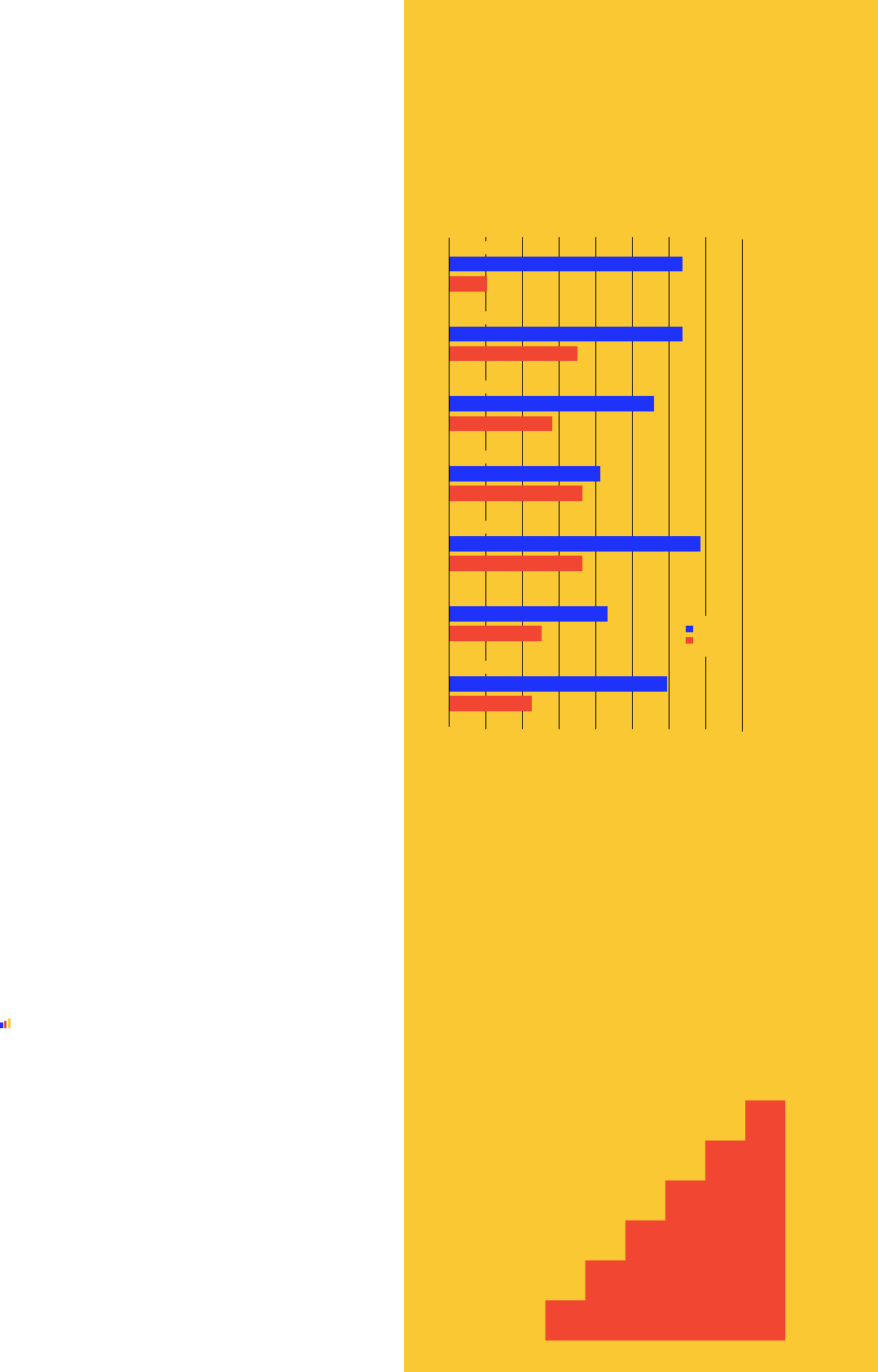
0%
5%
10%
15%
20%
30%
25%
40%
35%
15 Airline operating margin by region
2020
2021 E
% revenue
North America
European
Asia-Pacic
Middle East
Latin American
Africa
Industry
Industry Story
17
IATA Annual Review 2022
Airline nances improved in all regions in 2021
and are expected to improve further in 2022,
with North America leading the way
IATA’s October 2021 estimates anticipated reduced,
widespread operational losses in 2021. Those
estimates anticipate the same for 2022 across all the
main regions of airline registration, although the degree
of improvement will vary signicantly region by region.
Airlines based in North America are the best placed
nancially, beneting as they do from the large US
market, strong trac ows to Latin America and
Europe, and resilient economies. This is the only region
where the operating margin is expected to turn positive
in 2022.
Slow gains in international air trac meant that the
nances of European airlines improved marginally in
2021. Their earnings before interest and taxes (EBIT)
margin was at minus 17.4% at year-end 2021.
Drivers of nancial performance for airlines in
Asia-Pacic are mixed. The international air travel
recovery was almost nonexistent in this region in
2021, and even the region’s largest domestic markets
continue to be troubled by renewed COVID-19
outbreaks and risk-averse governments.
Air carriers in the Middle East experienced slow growth
in their operating margins in 2021. This was due mainly
to the region’s dependency on long-haul international
air travel, which is expected to take longer than other
market segments to return to its 2019 trac levels.
Latin American carriers posted the worst operating
margin on aggregate in 2020 and 2021, with several
airlines proceeding with US Chapter 11 bankruptcy.
There is nevertheless robust demand for leisure travel
in some markets to and from the region, which has
helped to improve regional airline nances somewhat.
In Africa, airline operating margins were around minus
13% in 2021, a resilient outcome. Looking ahead,
low-income countries in Africa are likely to struggle
economically in the near term, which will dampen the
recovery of air transport in those countries.
15 Source: IATA Economics
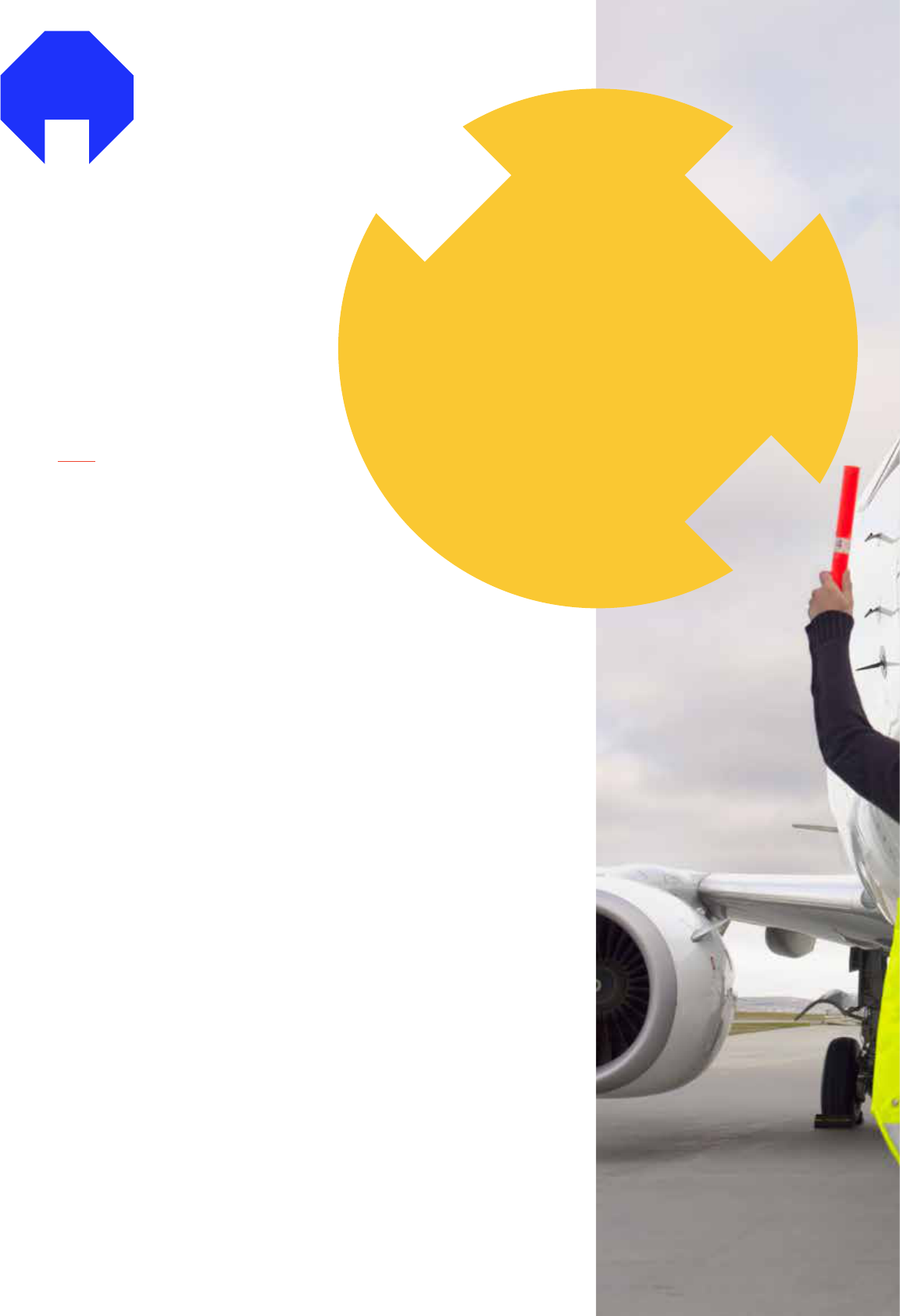
Safety
IATA Annual Review 2022
18
I
n the face of numerous
operational challenges, the airline
industry improved its safety
performance in several key areas
in 2021 compared with 2020 and
the 2017–2021 average.
Highlights of 2021 safety
performance:
● The total number of accidents,
the all-accident rate, and fatalities
were reduced
● IATA members and airlines on the
IATA Operational Safety Audit
(IOSA) registry (which includes
allIATA members) experienced
zero fatal accidents
● No runway/taxiway excursion
accidents occurred for the first
time in at least 15 years.
These strong results occurred as
the industry ramped-up operations
from the low point of April 2020,
while addressing issues that
included:
● Ensuring proficiency for air crew
flying reduced schedules or
returning to work after furlough
● The loss of many highly skilled
individuals owing to retirement
orredundancy
● Safely returning aircraft to
service after parking them for
extended periods
● Inconsistent and rapidly changing
border control measures that
placed significant stress on
aircrew in navigating testing and
quarantine requirements.
To ensure that IATA can support the
industry in delivering continuous
improvement in aviation safety,
a new three-pillar IATA Safety
Strategy has been developed:
● Safety Leadership:
Organizational safety begins
at the top. The IATA Safety
Leadership Program aims to
leverage the safety leadership
mindset of aviation executives to
highlight the benefits of a positive
safety culture to enhance safety
performance. Safety Leadership
principles, a Safety Leadership
Charter, and Safety Leadership
talks are all being utilized to
emphasize the criticality of
leadership. IATA’s Aviation Safety
Culture (I-ASC) Survey provides
airlines with a tool to measure
and continuously improve
their safety cultures using a
standardized methodology and
key performance indicators.
SAFETY
New three-pillar
safety strategy

Safety
19
IATA Annual Review 2022
Aviation and 5G
Though 5G telecommunications
services have been successfully
implemented in many jurisdictions
around the world with little to no
impact on airline operations, this
was not the case in the United
C-band 5G operations in January
2022 at certain US airports created
enormous disruption to aviation,
owing to the potential risk of
interference with radio altimeters
that are critical to aircraft landing
safety was not compromised,
on airlines as they worked to
comply with the special conditions
established by the US Federal
Aviation Administration (FAA) for
safe operations in the presence
Furthermore, it is anticipated that
the FAA will require airlines to
at their own expense to enable the
respective aircraft to continue to
serve 114 US airports where 5G
Protection of the civil aviation
spectrum and aircraft safety
IATA continues engaging with
governments to mitigate threats
to the civil aviation spectrum,
including encouraging responsible

Safety
IATA Annual Review 2022
20
All accident
rate (accidents
per one million
ights)
2021
1.01
(1 accident every
0.99million ights)
2020
1.58
(1 accident every
0.63 million ights)
1.23
(1 accident every
0.81 million ights)
All accident
rateforIATA
memberairlines
2021
0.44
(1 accident every
2.27million ights)
2020
0.77
(1 accident every
1.30 million ights)
0.72
(1 accident every
1.39 million ights)
Total
accidents
2021
26
2020
35
44.2
Fatal
accidents
2021
7
(1 jet and 6turboprop)
2020
5
7.4
Fatalities
2021
121
2020
132
207
Fatality
risk
2021
0.23
2020
0.13
0.14
● Safety Risk: This pillar captures
new and emerging aviation
hazards that put safety at risk
and offers potential industry
mitigations through a single
repository—the IATA Global
Safety Risk Management
Framework (GSRMF). It enables
the assessment and prioritization
of hazards and risks, captured
from across industry, to support
safety improvements through
safety risk assessments and
guidance material. As IATA
transforms its IOSA program
froma compliance-based
process to a risk-based one,
safety insights from audits will
add significant context to the
issues IATA looks to address
through safety improvement
programs. The IATA Global
Aviation Data Management
(GADM) platform, which contains
large amounts of safety data, will
support this by validating data
around identified safety risks.
IOSA will provide de-identified
safety insights from audits that
will feed into the GSRMF.
● Safety Connect: The IATA
Safety Connect program has
been designed to encourage
active communication among
airlines’ safety and compliance
managers regarding current
and emerging potential safety
issues. It provides a conduit to
exchangesafety intelligence
between peers to support a
deeper industry understanding
of current issues and employ
mitigations used by others to
collectively raise the baron
safety performance.
“To ensure that IATA can support the
industry in delivering continuous
improvement in aviation safety,
a new three-pillar IATA Safety

Safety
21
IATA Annual Review 2022
IATA member
airlines
fatalityrisk
2021
0.00
2020
0.06
0.04
Jet hull losses
(perone million
ights)
2021
0.13
(1 major accident
every7.7 million ights)
2020
0.16
(1 major accident
every6.3 million ights)
0.15
(1 major accident every
6.7 million ights
Turboprop hull
losses(per one
million ights)
2021
1.77
(1 hull loss every
0.56million ights)
2020
1.59
(1 hull loss every
0.63million ights)
1.22
(1 hull loss every
0.82million ights)
Total ights
(million)
2021
25.7
2020
22.2
36.6

Security
IATA Annual Review 2022
22
A
viation’s security
challenges include
cyberattacks on
corporatesystems,
geopolitical tensions resulting
in airspace closures, and
terrorism against assets, people,
and reputation. To keep pace,
governments are providing
supportand resources to
aviation, including capacity
building, so that countries with
limited resources can meet and
exceed their securityobligations.
These eortskeep ying secure
despitethe numerous threats.
Issues surrounding the safe and
secure management of civil aviation
in conict zones, and in the airport
environment persist, and in some
regions have escalated. In the
Kingdom of Saudi Arabia in 2021,
for example, 54 individual attacks
or attempted attacks were ocially
reported against airports under civil
control. Similarly, there were fatal
attacks reported in January 2022 in
the United Arab Emirates involving
the unlawful use of Unmanned
Aircraft Systems (UAS).
To counter these challenges,
information sharing is critical. IATA
facilitates the timely sharing of
information among key industry
participants through its Tactical
Operations Portal (ITOP).
The invasion of Ukraine by Russia
underscores the importance
of timely collaborative risk
assessment between governments
and the industry. As of end April
2022, all Ukrainian and large parts
SECURITY
Aviation maintains
its vigilance against
security threats
“IATA facilitates the
timely sharing of
information among key
industry participants
through its Tactical
of Russian airspace were closed to
civil aviation operations. Airspace
closures, regardless of the
reason, come with huge penalties
for aviation. Longer ight times
increased operating costs, fuel
consumption, and CO2 emissions,
for example. Any airspace closure
for whatever reason needs to
be monitored and reviewed on a
regular basis.
Meanwhile, the digital jamming
of civil aircraft global position
systemsand spoong even outside
conict zones—known as fake
information tactics—persists. To
assist the industry in mitigating this
risk, IATA manages a multitude of
outreach communications.
Governments have ocially warned
industry partners that cyberattacks
have increased across all enterprise
systems associated with critical
infrastructure services, including
transport. There have been no
incidents reported that have
targeted or aected the safety of
ight and/or met the threshold of an
act of unlawful interference. There
are indications, however, that state-
sponsored actors have increased
capabilities to disrupt civil aviation,
with data breaches causing supply
chain disruptions. International and
national cybersecurity eorts focus
on reducing the risks of unregulated
supply chains, and unknown network
and software vulnerabilities,
including ransomware.

Security
23
IATA Annual Review 2022

Regulations
IATA Annual Review 2022
24

Regulations
25
IATA Annual Review 2022
G
overnments need to weigh
the impact that additional
aviation taxes will have on
the contribution of aviation
connectivity to economic growth
versus higher tax revenue from the
economy as a whole. In principle,
aviation taxation should be
proportionate and fair and should
avoid competitive distortion
Green and carbon taxes
There has been a urry of green
and carbon (CO
2
) tax initiatives
across Europe, including proposed
increases to ticket taxes. In
early 2022, Belgium instigated a
passenger tax, and the Netherlands
tripled its tax. Carbon pricing
proposals in the form of taxes that
will potentially penalize aviation for
CO
2
emissions beyond the scope of
the EU Emissions Trading Scheme
have likewise been proposed.
The air transport industry is
advocating for the EU and other
nations to promote and incentivize
investments in SAF rather than
implement taxes to generate
revenue that is rarely invested in
projects to cut aviation emissions.
EU energy taxation directive
The industry is also monitoring
developments under the EU Energy
Taxation Directive concerning
the proposed fuel tax on intra-
EU ights—from which airlines
are exempt—and how this would
put EU airlines at a competitive
disadvantage. The EU, meanwhile,
must respect air services
agreements (ASAs) that exempt
airlines from non-EU countries
operating ights between EU
member countries from fuel tax.
Where the EU doesn’t have ASAs
with non-EU countries, the EU has
left the door open to apply a fuel
tax on the ights of non-EU airlines
operating from EU airports.
Base erosion and prot sharing
In November 2021, 137 countries
joined a two-pillar plan to reform
international taxation rules to
reduce base erosion and prot
sharing (BEPS) where multinational
enterprises exploit gaps and
mismatches between dierent
country’s tax systems. The global
airline industry is in the scope of the
new rules, but the annual turnover
threshold of the rules is so high that
it may apply to only ve major airline
groups. The threshold, though, could
drop 50% by 2030, which would put
more airlines in the scope of the
rules, especially as airlines recover
following the 2023 implementation
of the reformed rules.
Unruly passengers
There is growing concern
among airlines, passengers, and
governments over the increasing
frequency and severity of unruly
incidents involving violence
and harassment by passengers
againstcrews and other
passengers and failure to comply
with safety and public health
instructions. Yet, loopholes in
international air laws often result
in oenses going unpunished.
The air transport industry has
consequently adopted a set of
principles to deal with unruly
passenger behavior. In April 2022,
IATA bolstered those principles
with its publication of a high-level
document, Even safer and more
enjoyable air travel for all—a
strategy for reducing the problem
of unruly and disruptive passenger
Regulations need
to be consistent

Regulations
IATA Annual Review 2022
26
incidents, that uses examples
of good practice to illustrate the
practical steps to take to reduce
unruly and disruptive passenger
issues. These steps include
urginggovernments
● to communicate the types of
prohibited conduct onboard
aircraft and the legal and other
consequences of such conduct,
in line with Annex 9 of the
ChicagoConvention;
● to ratify Montreal Protocol 14
and thereby remove barriers to
enforcement and prosecution;
● to review the types of
enforcement measures that
are in place, including such
penalties as fines, which can be
issued to ensure that there are
consequences for disruptive
behavior; and
● to support the work of airlines
and other industry stakeholders
to prevent unruly and disruptive
passenger incidents.
Accessibility
IATA again consulted extensively
with disabled persons, industry
representatives, and wheelchair
and aircraft manufacturers to
develop policies and propose
solutions to make air transport
increasingly accessible for
travelers with disabilities. An
important concern for this traveler
group is damage to mobility aids.
In March 2022, IATA’s Mobility Aids
Action Group provided a number of
conclusions and recommendations:
● The dimensions and weight of
some mobility aids cause loading
and off-loading challenges.
Mobility aids must be stored in an
upright position and often cannot
be configured to fit through cargo
doors or secured in the cargo hold.
● Communication with passengers
must improve to ensure
that accurate dimensions
of mobility aids are shared
with carriers. Without this
information, carriersmay not
be able to correctly assemble
or disassemble a mobility aid.
Incorrect information can also
lead to injuries to handlers.
● Communication is also vital for
the safe handling of lithium-ion
batteries, which are used to
power some mobility aids and
must be properly disassembled
or disconnected to be compliant
with air transport’s dangerous
goods regulations.
The airline industry is doing what it
can to minimize damage to mobility
aids. But a major breakthrough for
the benet of travelers will only
come when wheelchair and other
mobility aid manufacturers change
their product designs to meet
the demands of air travel. In the
meantime, the Mobility Aids Action
Group seeks agreement on various
initiatives, including advocacy, with
national regulators for a market-
driven solution for mobility aids
suited to air travel.
Slots
Government restrictions on travel
once more challenged the slot
allocation system in 2021. And IATA
and airlines again urged regulators
not to return fully to the 80-20 slot-
use rule for the northern summer
2022 season, particularly while
it remained unclear when travel
restrictions would be lifted.
The Worldwide Airport Slot Board
(WASB) proposed measures that
recognize the global nature of
airline networks and their exposure
to changing circumstances in
dierent markets, such as how
the closure of one end of a route
dramatically aects the other end.
WASB’s measures recommend
some slot series returns for still-
closed routes and force majeure
for unknowns. Disappointingly,
the UK government announced
a 70% use rate for summer 2022
with no options, while the European
Commission agreed to a 64% rate.
Most other regulators remained
committed to the WASB approach
or to continued full slot alleviation.
In March, Singapore University of
Technology and Design’s Aviation
Studies Institute published a white
paper cowritten with IATA: Slot
Allocation Amidst COVID Recovery,
which focuses on the Association of
“Government
restrictions on travel
once more challenged
the slot allocation

Regulations
27
IATA Annual Review 2022
Working with
governments
fora safe
restart of
aviation
T
hroughout 2021, the
industry worked with
governments to secure a
safe, globally coordinated
restart of air transport. At the
ICAO High Level Conference on
COVID-19 (HLCC) in October 2021,
countries acknowledged that
greater harmonization between
countries was important to restore
international connectivity, rebuild
the condence of the traveling
public, and facilitate the revival of
the global economy.
At that time, most countries had
reopened their borders, at least
partially, or had announced plans
to do so. Almost all countries,
however, still had in place extensive
requirements with which air
travelers and airlines had to comply,
with little to no coordination or
consistency among countries
regarding those requirements.
Recognizing that industry input
was needed to help countries
deliver on the commitments they’d
made at the HLCC, IATA published
Restart to Recovery: A Blueprint
for Simplifying Air Travel during
COVID-19. The publication is
designed to assist governments
with practical recommendations
and best practices to make the
international air travel experience
simple, predictable, and consistent.
Southeast Asian Nations (ASEAN).
The paper concludes that the
most useful measure adopted by
authorities worldwide has been
“the ability to return series of slots
in advance of the season, while
protecting future rights to the same
slots. This has provided clarity
to airport planners, prevented
airlines from being expected to
y unnecessarily, and provided
other airlines with more access
opportunities.”
The same thinking features in the
WASB guidance for future seasons.
WASB oers a balance between
pandemic impact and demand
recovery based on best practices.
Slot relief is crucial in heavily
travel-restricted markets. In
other markets, the slot system
is under pressure from soaring
demand, which outstrips airlines’
eorts to restart fast. Signicant
operational challenges at
airports, often because of a
lack of security-cleared sta,
are causing bottlenecks and
ight cancellations. In May 2022,
Schiphol Airport requested that
airlines halt bookings to relieve
pressure on the airport. It is vital
that such requests are signaled
well in advance so that slots can
be recongured and consumers
minimally inconvenienced. It is
also essential that airlines that
cannot operate their slots because
of cancellations beyond their
control are not penalized under the
minimum slot-use rules in place.
A further complication to the slot
system has recently emerged with
the closure of Russian airspace
following that country’s invasion
of Ukraine. Severe and ongoing
disruption to schedules means
that maximum exibility at slot-
coordinated airports is needed
to enable carriers to retime
slots. IATA is working with the
Worldwide Airport Coordinators
Group (WWACG) to ensure that
exibility and information on
schedule updates can be shared
between aviation stakeholders and
passengers as quickly as possible.

Regulations
IATA Annual Review 2022
28
Responding poorly to Omicron
The emergence of the Omicron
variant in late November 2021
led to knee-jerk responses from
many governments, including
renewed border closures and
additional testing and quarantine
requirements. These responses
were imposed with little warning
or coordination despite clear
statements from the World Health
Organization (WHO) that such
draconian measures are ineective
and probably counterproductive.
IATA called for governments to “use
the experience of the last two years
to move to a coordinated, data-
driven approach that nds safe
alternatives to border closures and
quarantine.” It added that “travel
restrictions are not a long-term
solution to control COVID variants.”
It quickly became apparent that
strict border measures were indeed
ineective against Omicron given
the extreme transmissibility of the
variant. Professor David Heymann,
of the London School of Hygiene
and Tropical Medicine, noted that
“the travel bans that followed the
discovery of Omicron did not contain
its spread. That is because by the
time it was identied, it was already
present in many places.” Research
carried out for IATA and ACI
Europe by Oxera and Edge Health
also foundpredeparture testing
requirements to be ineective
at stopping or even slowing the
spreadof the Omicron variant.
Professor Heymann further
argued that travel measures
were increasingly unnecessary in
countries with high levels of vaccine
uptake because vaccination
oers good protection against
severe outcomes. In this respect,
many countries have rightly
begun to treat COVID-19 as an
endemic disease and are shifting
the responsibility for COVID risk
assessment and risk management
to individuals.
Rebounding from Omicron and
aiming for a return to normal
Omicron and vaccines have driven
a shift in government policies from
strict person-based measures to the
alleviation of controls once sufcient
levels of population protection have
been reached. As more countries
apply this approach, IATA is calling
on governments to align their border
measures to achieve a return to a
pre-pandemic travel experience.
Border measures should take into
account the Oxera and Edge Health
research indicating that testing
does not signicantly inuence
the spread of the virus and its
“As the industry
recovery gathers
momentum, it is
important to take stock
variants. And contact tracing,
including the lengthy and complex
passenger locator forms (PLFs)
that have become ubiquitous, calls
for a joint, holistic approach. The
border should not be seen as the
only line of defense. If there is no
contact tracing taking place within
a domestic destination, it makes
no sense for travelers to that
destination to ll out a PLF. The same
logic applies to vaccine certicates
and other health credentials.
Restoring the passenger
experience that airlines are used to
oering requires more than just the
relaxation of border measures. The
onboard experience must go back
to normal too. In particular, mask
mandates should be relaxed in line
with domestic settings. Masking
onboard should be voluntary and
a matter of choice for passengers
and crew. There is no logic in
requiring masks onboard aircraft
when they are not required in
restaurants, at cultural and sporting
venues, or even within airports.
Looking ahead with resilience
and preparedness
As the industry recovery gathers
momentum, it is important to
take stock of the lessons learned
and to ensure that the industry is
resilient to future variants of the
SARS-COV2 virus. Government and
international organizations, too,
need to be much better prepared
for health emergencies, with global
pandemics expected to become
increasingly common.
Digital tools have the potential
not only to transform identity
management and facilitate
contactless travel but also
to heighten the resilience of
international travel amid health
emergencies. Throughout 2022 and
beyond, IATA will collaborate with
ICAO, WHO, and other stakeholders
to ensure that all are fully prepared
for the next global health event
and for a quicker, more consistent
response than has been the case
during the COVID pandemic. This
will be a key theme of IATA’s input
at the ICAO Assembly from 27
September to 7 October 2022.

Regulations
29
IATA Annual Review 2022

Environment and Sustainability
IATA Annual Review 2022
30 C
limate change is an
existential threat, and
environmental action
remains top of the
industry’s agenda. At the 77th IATA
Annual General Meeting in Boston,
United States, IATA member airlines
passed a resolution committing
them to achieving net zero carbon
emissions from their operations
by2050. This brings air transport
inline with the objective of the
ParisAgreement to limit global
warming to1.5°C.
Success will require the coordinated
eorts of the entire industry
(airlines, airports, air navigation
service providers, manufacturers)
and signicant government support.
The industry must progressively
reduce its emissions and
accommodate growing demand,
which is particularly strong in the
developing world.
To serve the needs of the 10 billion
people expected to y in 2050, at
least 1.8 gigatons of carbon must
be abated in that year. Moreover,
the net zero commitment implies
that a cumulative total of 21.2
gigatons of carbon will be abated
between now and 2050.
The resolution demands that all
industry stakeholders commit
to addressing the environmental
impact of their policies, products,
and activities with concrete actions
and clear timelines, including:
● Fuel-producing companies
bringing large scale, cost-
competitive sustainable aviation
fuels (SAF) to the market
● Governments and air navigation
service providers (ANSPs)
eliminating inefficiencies in
airtraffic management and
airspace infrastructure
● Aircraft and engine
manufacturers producing
radically more efficient airframe
and propulsion technologies
● Airport operators providing the
needed infrastructure to supply
sustainable aviation fuels (SAF)
ina cost-effective manner.
An immediate enabler is the
International Civil Aviation
Organization’s (ICAO) Carbon
Osetting and Reduction Scheme
for International Aviation (CORSIA).
This will stabilize international
emissions in the short-to-medium
term. Support for this was rearmed
in IATA’s net zero resolution. Under
CORSIA, airlines are required to
purchase eligible emission units to
oset increases in CO2 emissions
above a baseline, which is dened
as the average of emissions in 2019
and 2020. In 2020, the ICAO Council
ENVIRONMENT AND SUSTAINABILITY
The industry
strengthened
itssustainability
commitment
withFly Net Zero
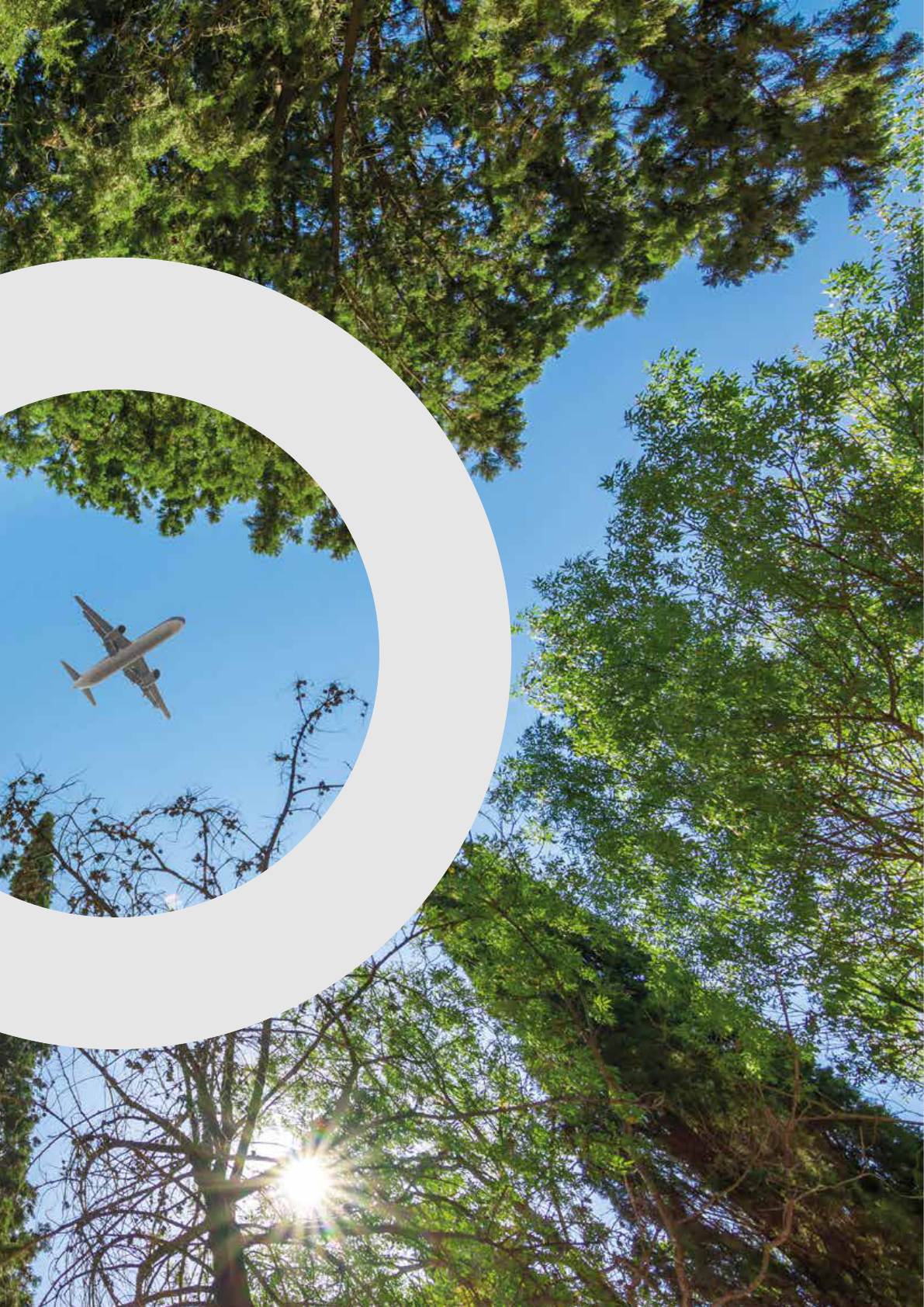
Environment and Sustainability
31
IATA Annual Review 2022

Environment and Sustainability
IATA Annual Review 2022
32
decided that 2019 emissions
from international aviation will
be CORSIA’s baseline for its pilot
phase (2021–2023). However, the
baseline for 2024–2035 remains to
be decided and is under discussion
by ICAO member states. It should be
agreed on at ICAO’s 41st Assembly,
taking place from 27 September to
14 October 2022.
Progress to date
To reach the climate goal, the
aviation industry has unveiled a raft
of initiatives, from major purchases
of SAF and investments to grow
SAF supply, to prototype electric
and hydrogen aircraft. Bringing
sucient SAF to market and making
radical new technology a reality will
require a massive eort from all
stakeholders in the sector.
● In 2021, 100 million liters of
SAFwere produced and used
byairlines. Some 38 countries
have passed SAF-specific
policies so far.
● In 2022, more than 450,000
flights will operate using SAF
andairlines will agree some
$17billion in forward purchases.
● New SAF production capacity is
coming online across the world.
● Airlines and manufacturers
are joining forces to develop
hydrogen-powered aircraft or
technical solutions to make
alternative means of propulsion
commercially viable.
To help passengers and the
industry accurately understand
their emissions, in March 2022
IATA released the rst Industry-
developed Passenger CO2
Calculation Methodology. It uses
veried airline operational data
to provide the most accurate
emissions calculation for a
specicight. This is particularly
true in the corporate sector where
such calculations are needed to
underpin voluntary emissions
reductions targets.
The IATA Environmental
Assessment (IEnvA) program is
an evaluation system designed
toindependently assess and
improve the environmental
management of an airline.
It requires airlines and their
supply chain aliates to keep
track of, mitigate, and manage
environmental and sustainability
risks. This assessment is aligned
with internationally accepted
management standards (IOSA
and ISO14001:2015) to eectively
address the most signicant
sustainability challenges that the
aviation industry faces today. It
will help to build a sustainable
company and requires CEO-
level participation. Progress is
regularly evaluated by independent
assessors. To date, a total of 32
airlines have been certied or are
undergoing the assessment.
Contribution to
achieving Net Zero
Carbon in 2050
65% Sustainable aviation fuel
13% New technologies
3% Infrastructure / operations
19% Osetting / carbon capture
Achieving net zero by 2050 will
require eliminating emissions
The strategy is to abate as
much CO2 as possible using
in-sector solutions, such as
sustainable aviation fuels,
new aircraft technology,
and infrastructure, and the
development of zero-emissions
energy sources, including
Any emissions that cannot be
eliminated at source will be
eliminated through out-of-
sector options, such as carbon
capture and storage and
“Achieving net zero by 2050 will
require eliminating emissions at
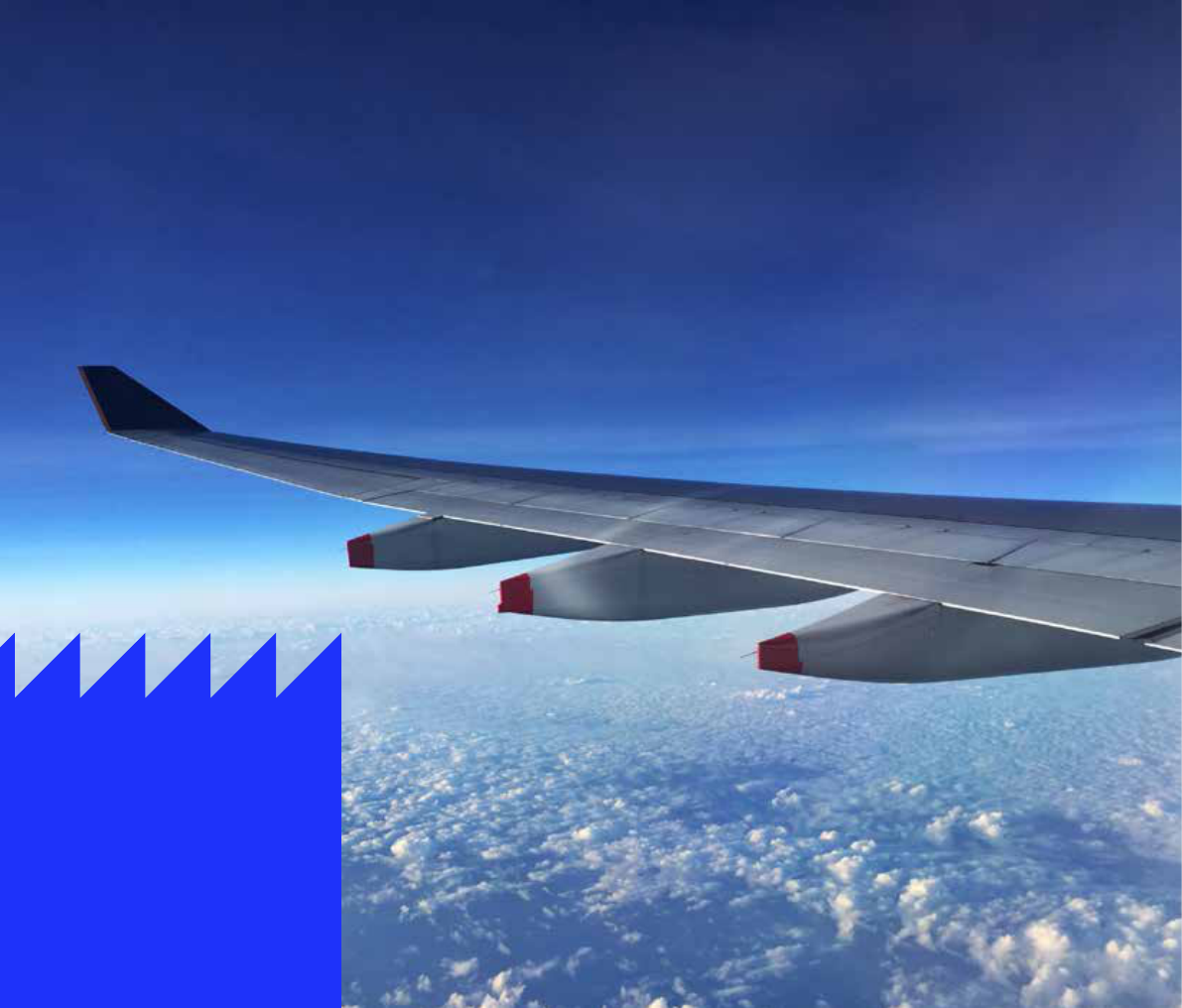
Environment and Sustainability
33
IATA Annual Review 2022
Developments in 2022
41
st
ICAO Assembly
At its 41
st
Assembly, ICAO member
states are considering adopting a
long-term aspirational goal (LTAG)
to reduce carbon emissions from
international aviation. IATA and
the industry will encourage ICAO
to focus on a global framework
for reaching the LTAG and any
interim targets. Adopting the
LTAG is important to ensure
government support for aviation’s
decarbonization and alignment
with the Paris Agreement goals. It
would provide policy certainty to
enable long-term investments in
new technology and new forms of
energy, notably the much-needed
investment in SAF production.
Failure to adopt the LTAG would
result in a patchwork of national,
regional, or local measures and a
weakening of CORSIA.
Fit for 55
With its aim to cut emissions
acrossthe European Union 55% by
2030, the European Commission’s
‘Fit for 55’ environmental legislation
proposals are an opportunity
to deliver a signicant boost for
sustainable aviation, unleashing
investment in green technologies
and operational eciencies.
But airlines have concerns
about the proposals which, if
adopted will likely represent a
missed opportunity. Instead of
incentivizing green technologies
and operational eciency
improvements, thus making
ying sustainable for all, the
package aims to reduce air
travel by raising economic
barriers and making it less
aordable. Advocacy eorts
arefocusing on persuading
Europe to modify ‘Fit for 55’ to
provide practical measures to
boost the production of SAF
and support the implementation
ofCORSIA.

Passenger Experience
IATA Annual Review 2022
34

Passenger Experience
35
IATA Annual Review 2022
G
overnment-imposed
COVID-19 travel
restrictions forced
airlines to revert to the
manual verication of travel and
health documents, especially
for international travel. This led
to the suspension of many of
the automated and contactless
processes travelers enjoyed
prior to the pandemic. As trac
started to pick-up, many airlines
introduced back-oce processes
that permitted passengers to
submit their documents in advance
of their trips. This has allowed for
the resumption of some automated
processes with the aim of reducing
the number of customer touch
points in the travel process.
The past two years have
demonstrated the need to
implement automated solutions
to avoid airport disruptions and
congestion. IATA is collaborating
with industry stakeholders to
accelerate work on its One ID
initiative to provide travelers with the
expedited experience they demand.
One ID is helping transition the air
transport industry to a day when
travelers can move from curb to
gate using a single biometric travel
token, such as a face, ngerprint,
or iris scan, from which their
information is provided direct
to governments without airline
intermediation. Airlines are rm
supporters of One ID.
The emphasis now is on ensuring
that regulation is in place to support
the vision of paperless travel. One
ID will make traveling processes
more ecient and pleasant for
passengers and will utilize valuable
government resources more
eectively. It will take self-service
to the next level for travelers,
improve airport eciency,
and generate cost-savings for
stakeholders—all of which are
essential as the industry recovers
from the COVID-19 pandemic.
PASSENGER EXPERIENCE
From curb to gate with
asingle biometric token
“The emphasis now
is on ensuring that
regulation is in place
to support the vision

Cargo
IATA Annual Review 2022
36
CARGO
Air cargo revenues
vital to airlines
A
ir cargo is the backbone
of global supply chains.
The eciencies and
advantages of transporting
goods by air were highlighted
during the COVID-19 pandemic,
with the delivery of life-saving
personal protective equipment,
medical supplies, and vaccines. The
passenger side of the air transport
business, conversely, dimmed as
countries closed their borders and
added to their travel restrictions.
In 2021, air cargo generated $155.0
billion, up from $129.0 billion in 2020
and $101.0 billion in 2019. Air cargo
therefore contributed more than
a third of airline revenues in 2021,
over double its contribution in 2020.
Global demand for air cargo was
up 6.9% compared with the pre-
covid level in 2019 and up 18.7%
compared with the level in 2020. Air
cargo capacity in 2021, however—
measured in available cargo tonne
kilometers (ACTKs)—was 10.9%
below the ACTKs in 2019 (-12.8%
for international operations). The
lack of capacity contributed to
increased yields and revenues that,
in turn, enabled airlines to continue
to oer passenger connectivity on
many routes during the pandemic.
Eliminating supply chain
congestion
Global supply chain congestion
is contributing to an inationary
environment and causing
challenges for air cargo. Air cargo
crews face hardships navigating
COVID-19 restrictions, and
operations are being adversely
aected by shortages of human
resources and facilities.
IATA continues to work with
governments on removing
operational barriers to ensure
that vital air cargo supply lines
remain open, ecient, and
eective. Specically, IATA urges
governments to exempt air
cargo crews from the COVID-19
restrictions imposed on regular
travelers and to coordinate and
standardize their pandemic
measures so that air cargo can
move around the world with
minimaldisruption.
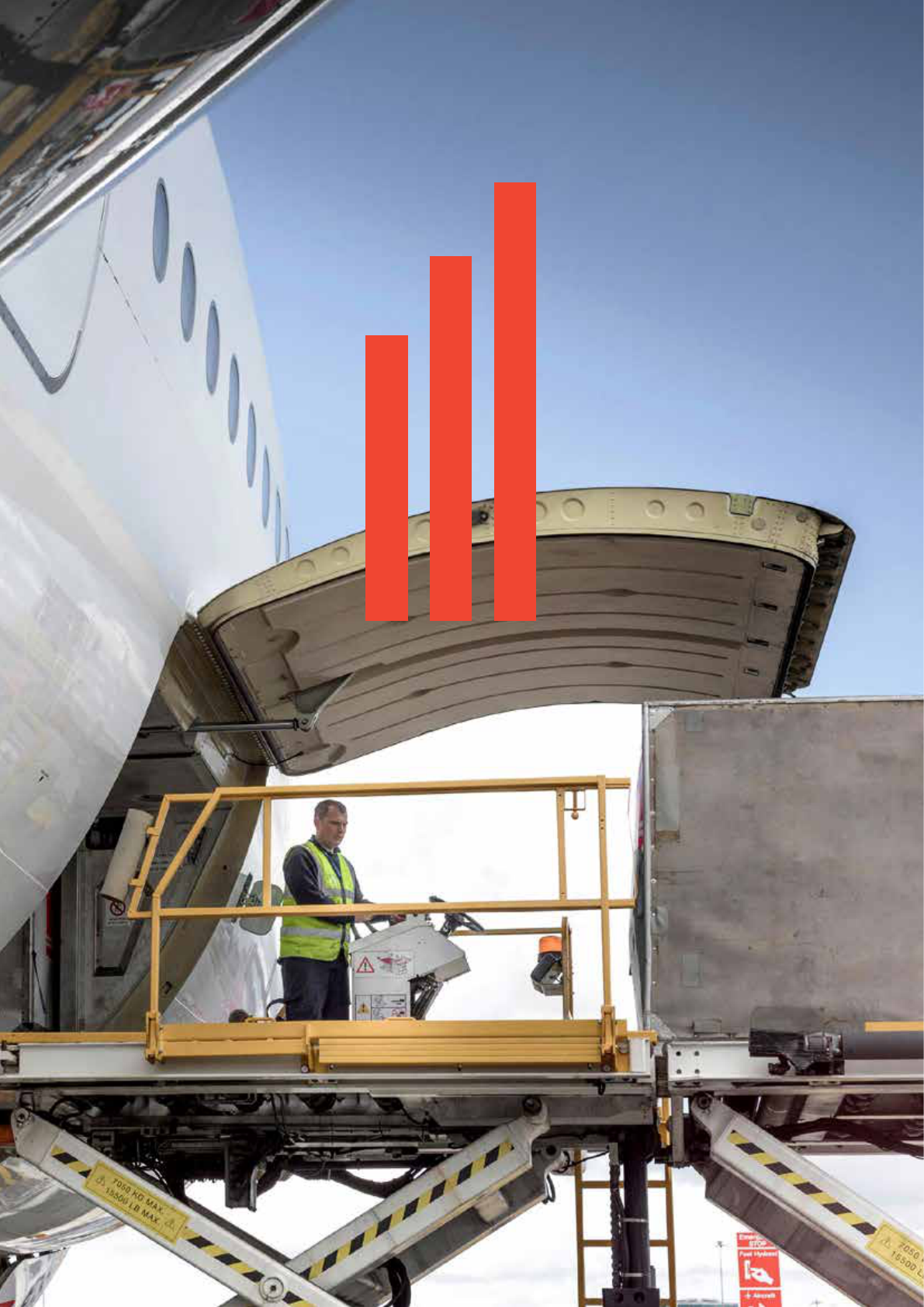
Cargo
37
IATA Annual Review 2022
“In 2021,
air cargo
generated
$155.0 billion,
up from
$129.0 billion
in2020 and
$101.0 billion
in2019.”

Cargo
IATA Annual Review 2022
38
Contributing to making
aviation sustainable
Airlines have committed to net-
zero carbon emissions by 2050
in line with the Paris Agreement.
The strategy is to abate as much
CO2 as possible from such in-
sector solutions as SAF, aircraft
technologies, operations, and
infrastructure. This includes the
development of zero-emissions
energy sources, such as electricity
and hydrogen power. Emissions
that cannot be eliminated at source
will be eliminated through out-of-
sector options, including carbon
capture and storage and credible
osetting schemes.
Air cargo has an important role
to play in air transport’s bid for
sustainability, from stabilizing
to reducing net emissions. We
are already seeing some great
examples in air cargo’s re-
eeting, SAF commitments, and
electrication of ramp vehicles.
More opportunities are available for
air cargo to improve its operational
eciency through modernization
and digitalization, yet another
priority for the air transport
industry as a whole.
Air cargo’s eorts regarding
sustainability are supported by
its customers. Most air cargo
customers are themselves
committed to reducing the carbon
footprint of their supply chains.
Modernizing and elevating
theeciency of air cargo
The pandemic accelerated the
growth of e-commerce. This has
put pressure on airlines to digitalize
and to digitally collect data for
real-time tracking. In addition to
tracking the location of a shipment,
monitoring a shipment’s condition
regarding its temperature and the
like has become a requirement for
many shippers. Progress in this
andother respects is being made.
The e-air waybill is expected to
cover 100% of shipments on all
enabled trade lanes by the end
of 2022. That will yield a fully
digitalized supply chain that
employs a single standardized
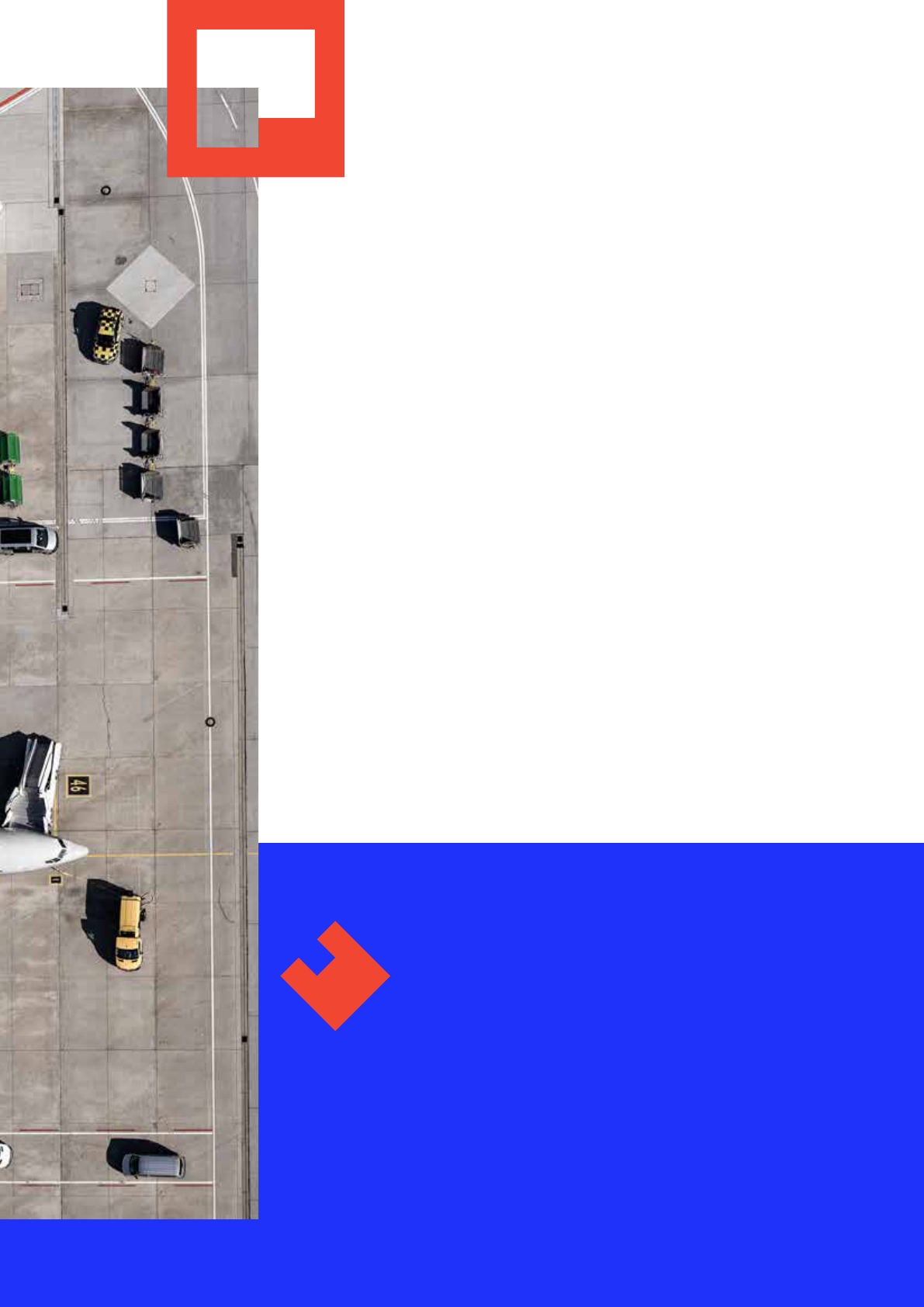
Cargo
39
IATA Annual Review 2022
and entirely exchangeable data
set. This is the vision behind One
Record, which is undergoing 17
test implementations involving
145 companies and three customs
authorities. Underpinning the
digitalization of the supply chain
is IATA’s Cargo XML messaging
standard, which is being accepted
by an increasing number of
customs authorities.
Safety
The transport of lithium batteries is
a priority safety issue for air cargo.
The main concern is rogue shippers
who mis-declare consignments
containing lithium batteries.
To mitigate the risk that lithium
batteries pose for air cargo, IATA
has changed the Cargo Services
Resolution and Recommended
Practices on Consignment Security
Declaration. Eective July 2022, the
revised declaration will be the basis
for aligning security standards and
safety approaches for regulated
agents regarding lithium batteries.
Eective enforcement is also
critical. To that end, IATA is
advocating for the expanded
collection and distribution
of incident data and for the
criminalization of mislabeling
dangerous goods. IATA also
recognizes that operational
solutions are needed to attenuate
the risk to air cargo posed by
lithiumbatteries. IATA is working
with the Airport Services
Association (ASA) and the US
FAA to develop a standard for re
containment covers. In addition,
the Center of Excellence for
Independent Validators (CEIV)
Lithium Battery program has
been launched to encourage
best practice in handling
lithiumbatteries.
People
Talent is essential for the
advancement of air cargo. IATA
has two critical industry programs
that help attract people to, and
retain people in, the air cargo
business. The Future Air Cargo
Executive (FACE) program is
open to all air cargo and logistics
employees under the age of 35
and provides a specic summit for
this next generation of air cargo
management as part of the annual
IATA World Cargo Symposium
(WCS). The FACE UP contest,
heldbiannually, allows recent
graduates whose theses are about
innovation and transformation in
air transport logistics, such as air
cargo, supply chain management,
mobility and IT solutions, to present
their theses at the WCS.
“IATA has two critical
industry programs that
help attract people to,
and retain people in,

Financial Services
IATA Annual Review 2022
40
D
espite the ongoing
challenges of the COVID-19
pandemic, the IATA
Financial Settlement
Systems (IFSS) performed at high
levels of eciency and security in
2021. Excluding certain overhead
expenses, the IFSS reduced its cost
base $0.74 million compared with
2020 and processed $201.7 billion,
not including refunds. The amount
the IFSS processed in 2021 was up
from $156.3 billion in 2020 but was
still well below the $449.8 billion
that it processed in 2019.
IATA’s Billing and Settlement Plan
(BSP) expedites and simplies the
selling, reporting, and remittance
procedures of IATA-accredited
travel agents and improves
nancial control and cash ow for
approximately 400 participating
airlines. In 2021, the BSP processed
$74.7 billion, including $16.0 billion
in refunds. It processed $76.0
billion in 2020, including a larger
portion of refunds, at $25.0 billion.
In comparison, the BSP processed
$237.1 billion in 2019, the year
before the COVID-19 pandemic.
At the close of 2021, there were
153 BSPs in 181 countries and
territories. Their overall on-time
settlement rate was a stable
99.977%.
IATA’s Cargo Account Settlement
System (CASS) simplies the billing
and settling of accounts between
airlines and freight forwarders. It
operates through CASSLink, an
advanced, global, web-enabled
e-billing solution. In 2021, CASS
processed $57.4 billion, with an
on-time settlement rate of 99.999%.
This is similar to the $42.0 billion and
on-time settlement rate of 99.995%
in 2020. By comparison, CASS
processed $32.7 billion in 2019.
At the end of 2021, 97 CASS
operations were serving more
than 230 general sales and
serviceagents (GSSAs) and
over240 airlines.
To ensure that CASSLink continues
to deliver fast, secure, and reliable
service to all participants, IATA
launched the CASSLink project.
Theaim is to modernize the
platformto meet future operational
needs and to make it more user
friendly. The implementation of
the renewed platform is planned
tostartlater in 2022.
The IATA Clearing House (ICH)
provides fast, secure, cost-
eective settlement services
to more than 480 airlines and
associated companies in the value
chain. In 2021, the ICH processed
$19.2 billion and had a nancial
settlement rate of 100%, meaning
that the ICH settled every invoice
presented to it despite the industry
going through its biggest crisis
ever. In 2020, the ICH processed
$20.4 billion and had a nancial
settlement success rate of
99.977%. The year before, in 2019,
the ICH processed $62.5 billion.
IATA Currency Clearance
Services (ICCS) oer global cash
management that enables more
than 375 participating airlines to
centrally control and repatriate
their BSP and CASS sales, including
from countries with severe
currency liquidity issues. The ICCS
processed $22.5 billion in 2021,
compared with $16.0 billion in 2020
and $37.3 billion in 2019.
IATA’s Simplied Invoicing and
Settlement (SIS) is a cost-eective
electronic invoicing platform
legallycompliant for e-invoicing
in 46 countries. It enables the
exchange of electronic data
amongairlines and between
airlinesand direct operating cost
suppliers. The use of a single
standard, the IS-XML, simplies
business activity for the industry
and allows suppliers to use one
invoicing standard for all their
airlinecustomers. SIS automation
and cost control can save
companies upto 2% on operating
expenses.
In 2021, SIS had more than 2,850
participants, including 445 airlines,
FINANCIAL SERVICES
Financial systems maintain
eiciency and security
Blocked Funds
In contravention of bilateral
agreements and global standards,
some countries block the
repatriation of airline funds
of April 2022, a 40% increase
The country blocking the most
funds is Nigeria, where some
Governments are urged to work
with the aviation industry to
airlines from repatriating
enable aviation to provide the
jobs and to energize economies as
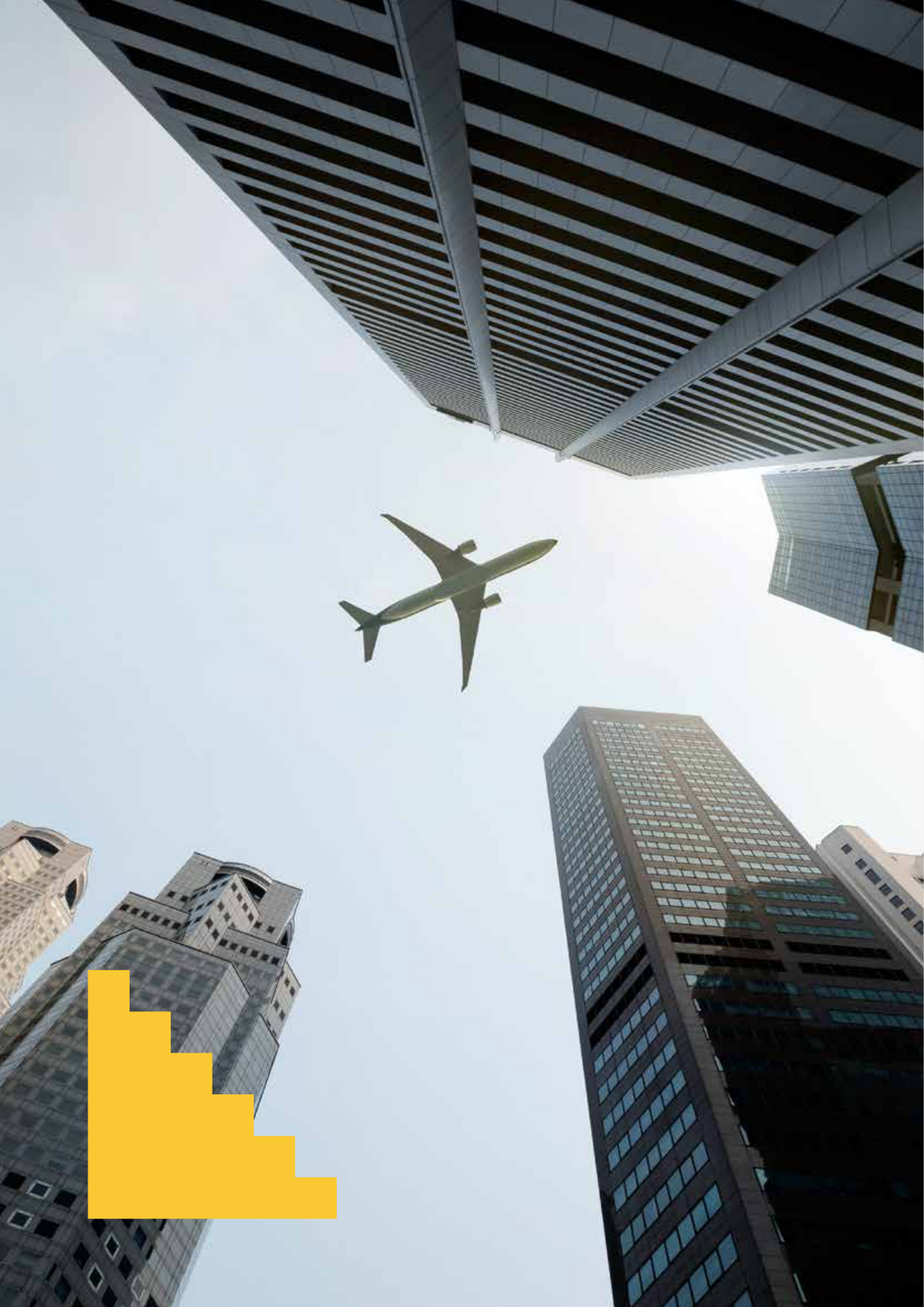
Financial Services
41
IATA Annual Review 2022
373 suppliers, and 2,032 other
entities. It processed over 1.12
million interline and supplier invoices
and settled more than $25.9 billion.
SIS processed $25.0 billion in 2020
and $76.0 billion in 2019.
IATA’s Enhancement & Financing
(E&F) service gives air navigation
service providers (ANSPs)
and airports access to IATA’s
globally trusted systems and
processes for accurate billing data,
standardized e-invoices that can be
automatically validated, and secure
fund collection. E&F helps airlines
avoid late payment penalties,
handle reconciliation concerns,
and resolve disputes through a
standardized billing process with a
single point of contact. In 2021, E&F
processed $2.0 billion, compared
with $1.9 billion in 2020 and $4.2
billion in 2019.
“CASS processed
$57.4 billion, with an
on-time settlement
rate of99.999%.”
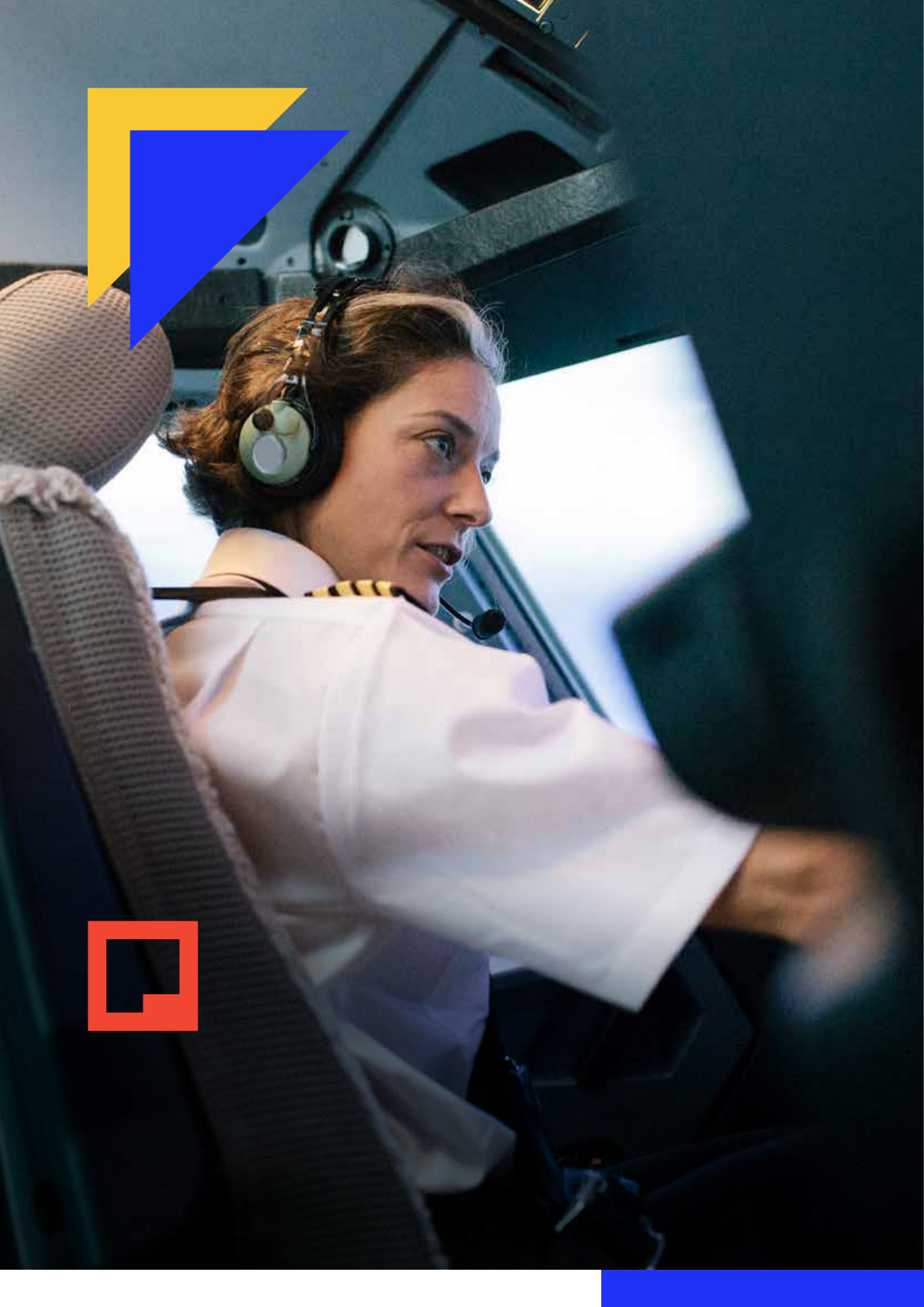
Diversity & Inclusion
IATA Annual Review 2022
42
“Airlines compete
commercially,
inclusion demand

Diversity & Inclusion
43
IATA Annual Review 2022
T
he aviation industry is
continuing its focus on
gender diversity. Its
percentage of women
in senior and technical roles is
disproportionately low compared
with other industries. In fact, only
22—25 if we count the latest
additions—of IATA member airlines
have female CEOs. And industry
data suggests that a mere 4% of
airline pilots are female. Making
gender diversity an industry
priorityis essential.
To help raise awareness of, and
nd solutions for, the air transport
industry’s gender gap, IATA
launched its 25by2025 initiative in
2019. More than 111 signatories
representing airlines and aviation
companies from all parts of the
world and responsible for 50% of
global air trac have signed up to
25by2025. Fully 36 signatories have
joined the initiative since the IATA
Annual General Meeting in Boston
in October 2021.
Airlines compete commercially,
but diversity and inclusion demand
their collaboration. Every quarter,
the 25by2025 signatories meet
to share best practices and to
discuss how they are integrating
diversity and inclusion into their
business practices and strategies
to strengthen their workforces.
Airlines are increasingly focused
on attracting, developing, and
retaining female employees from all
walks of life whose experiences and
gender will help to shape the future
of the air transport industry.
Up to end April 2022, ve female
CEOs have been appointed, at KLM
Royal Dutch Airlines, El Al, Hahn
Air, Austrian Airlines, and Pegasus.
Their appointments exemplify an
epochal change in leadership within
the industry and among IATA’s
membership. Most importantly,
the appointment of women to the
industry’s uppermost positions is
tangible evidence of the degree to
which airlines prioritize diversity
and inclusion.
These and other eorts in respect
of diversity and inclusion will be
shared at the annual IATA Diversity
& Inclusion Awards held as part
of IATA’s Annual General Meeting,
in Qatar, in June 2022. The IATA
Diversity & Inclusion Awards are
the industry’s principal means
of recognizing and celebrating
excellence in driving the 25by2025
agenda in three categories:
inspirational role model, high-yer,
and diversity and inclusion team.
DIVERSITY & INCLUSION
25by2025 initiative
gathers momentum

Airline Retailing
IATA Annual Review 2022
44
A
irline retailing enables
travelers to see the
value of airline oers
through a multitude of
options beyond the standard
fare and schedule information,
regardless ofwhether travelers
buy through anairline’s website
or a travel agent.Complementing
these purchase options are
new paymentoptions that allow
customers to use the payment
method of their choice and airlines
to benet from reduced payment
costs and the ability to accept
diverse forms of payment onboard.
What is more, whatever oer a
traveler chooses, the traveler’s
purchase will be fullled using
a single order. Customers will
no longer have to wrangle with
Passenger Name Records (PNRs)
or a booking record; with e-tickets
(the receipt); and with electronic
miscellaneous documents
(EMDs) when they purchase
ancillary services. And airlines
will no longerhave to struggle to
reconciledierent elements of
a traveler’s journey should that
journey be disrupted, as there
will just be one order for an entire
journey, whether on a single
airlineor multiple airlines.
The goal is to achieve customer
centricity. The air transport
industry desires to put travelers
fully in control of their credentials
and data in a way that permits them
to eortlessly consume any airline
service, even, for example, during
travel disruptions. To achieve this,
the industry is transforming its
legacy processes and artifacts into
modern retailing processes.
Modernizing legacy ticketing and
back-oce systems and processes
is a case in point. The introduction
of e-tickets digitized but did not
otherwise change the related
legacy paper processes. Online
retailing, however, requires the
complete replacement of legacy
e-tickets, PNRs and EMDs. This is
the purpose of ONE Order, which
combines all three in the single
order common to Internet retailing.
Along these lines, Finnair
announced in September 2021
in anindustry rst that it would
no longer process legacy-based
distribution transactions beyond
the end of 2025 and issued a call
to action for others in the industry
to join it in this signicant step
toward airline retailing. The new
distributioncapability (NDC)
standard is the crucial gateway
toenabling airline retailing, as
it gives airlines control of the
oer, which, in legacy systems,
is created outside the airline. To
date, more than 60 airlines have
some degree of airline retailing
capabilitythroughthe NDC.
IATA is supporting airlines’
transformation to airline retailing
by ensuring that standards,
implementation guides, and
other requirements are easily
accessible to all at every level
of each organization. IATA
also engages with technology
providers, travel agents, online
travel agencies (OTAs), metasearch
entities, and corporate buyers
to ensure that alltechnical pain
points are identied and that
alternative industry approaches
areproposed where possible.
In October 2021, IATA established
its Airline Retailing Maturity (ARM)
index to help airlines achieve
airlineretailing. The ARM index
looks at an airline’s technical
capabilities and partnerships with
sellers, and oers a “value capture
compass,” atool to help airlines
pinpoint where value is being or
could be created. According to a
report by McKinsey, airline retailing
has a value creation potential of up
to $7 per passenger, the equivalent
of approximately 4% of revenue.
AIRLINE RETAILING
Airline retailing to put
the customer in control

Airline Retailing
45
IATA Annual Review 2022
“The air transport
industry desires to
put travelers fully
in control of their

www.iata.org
